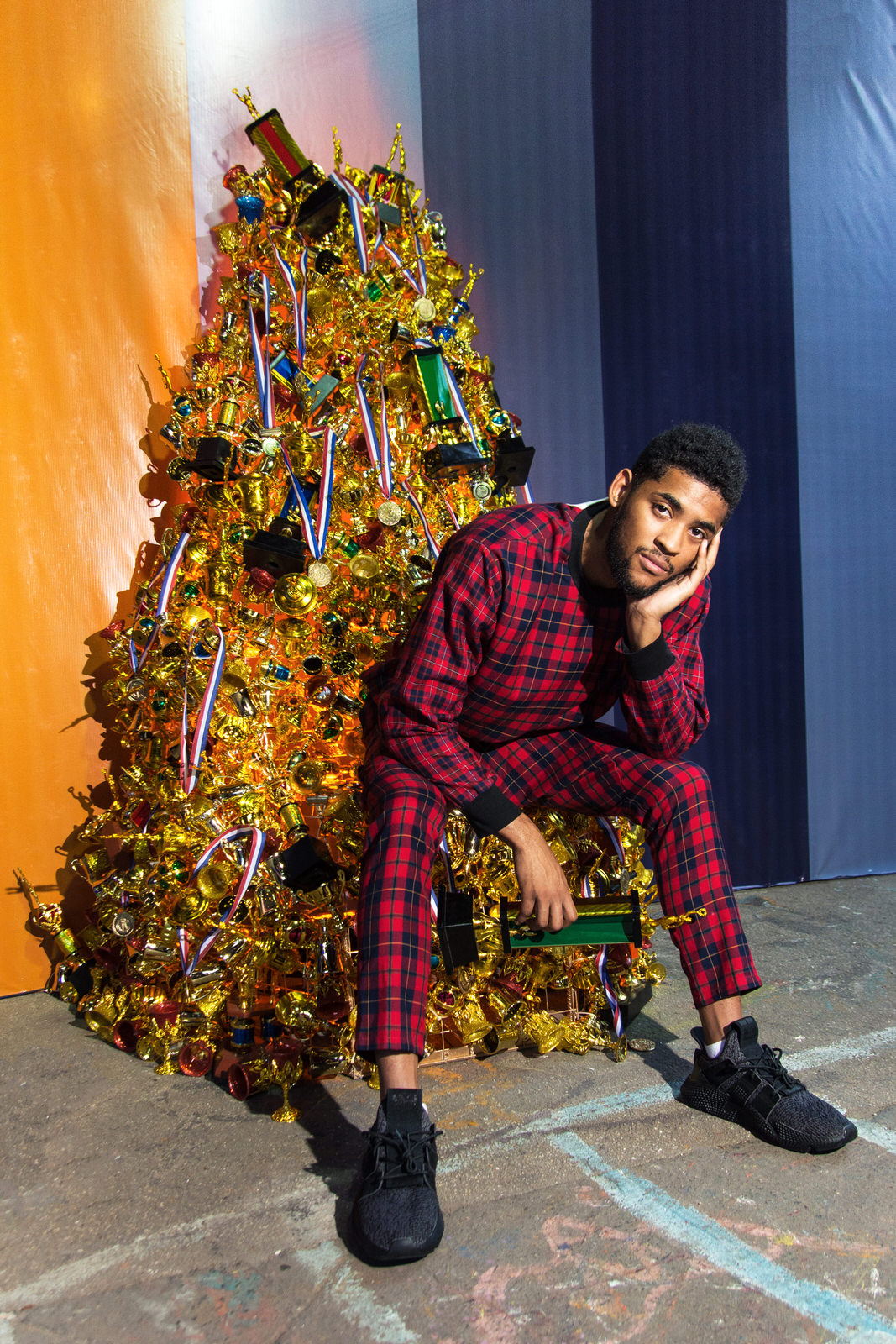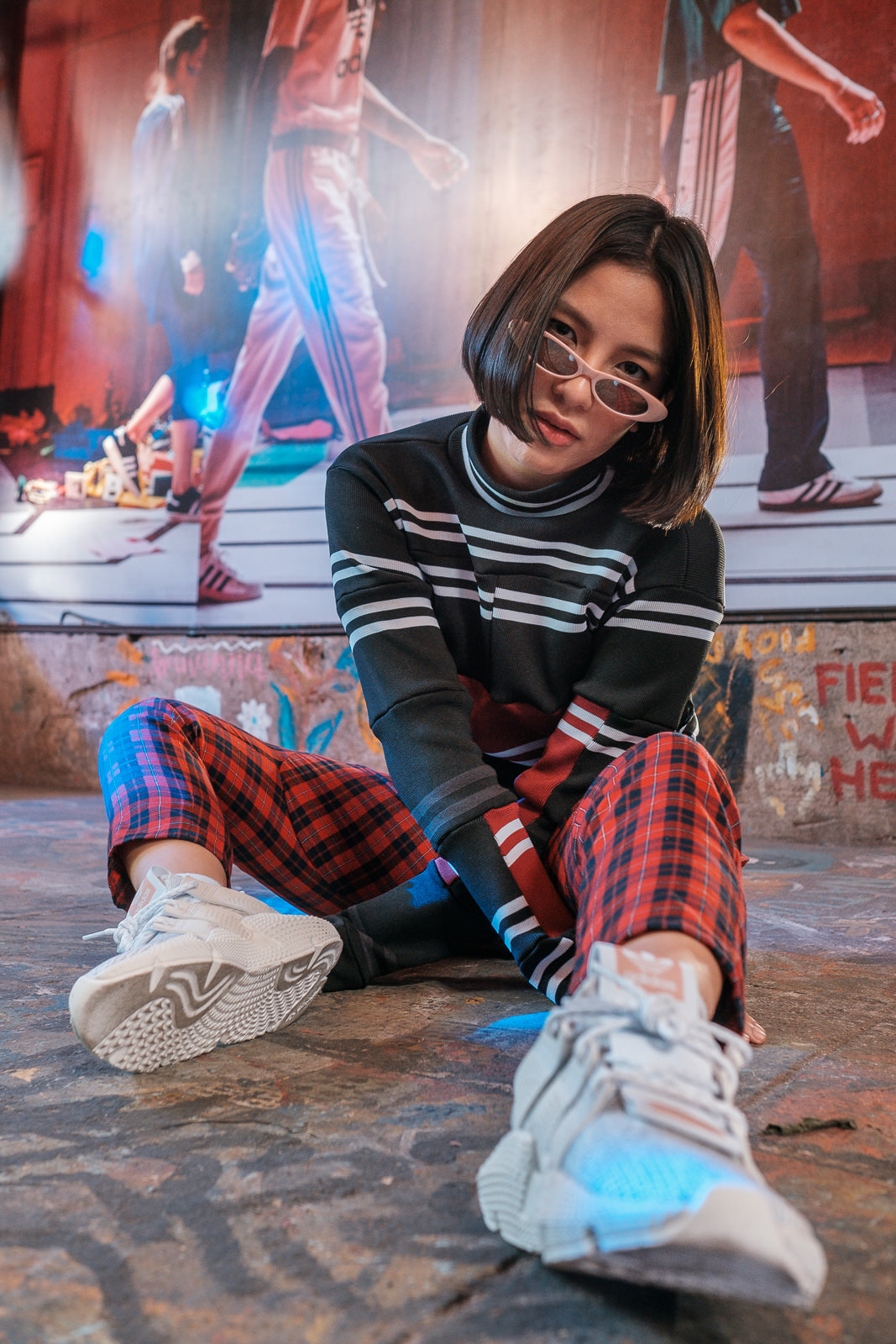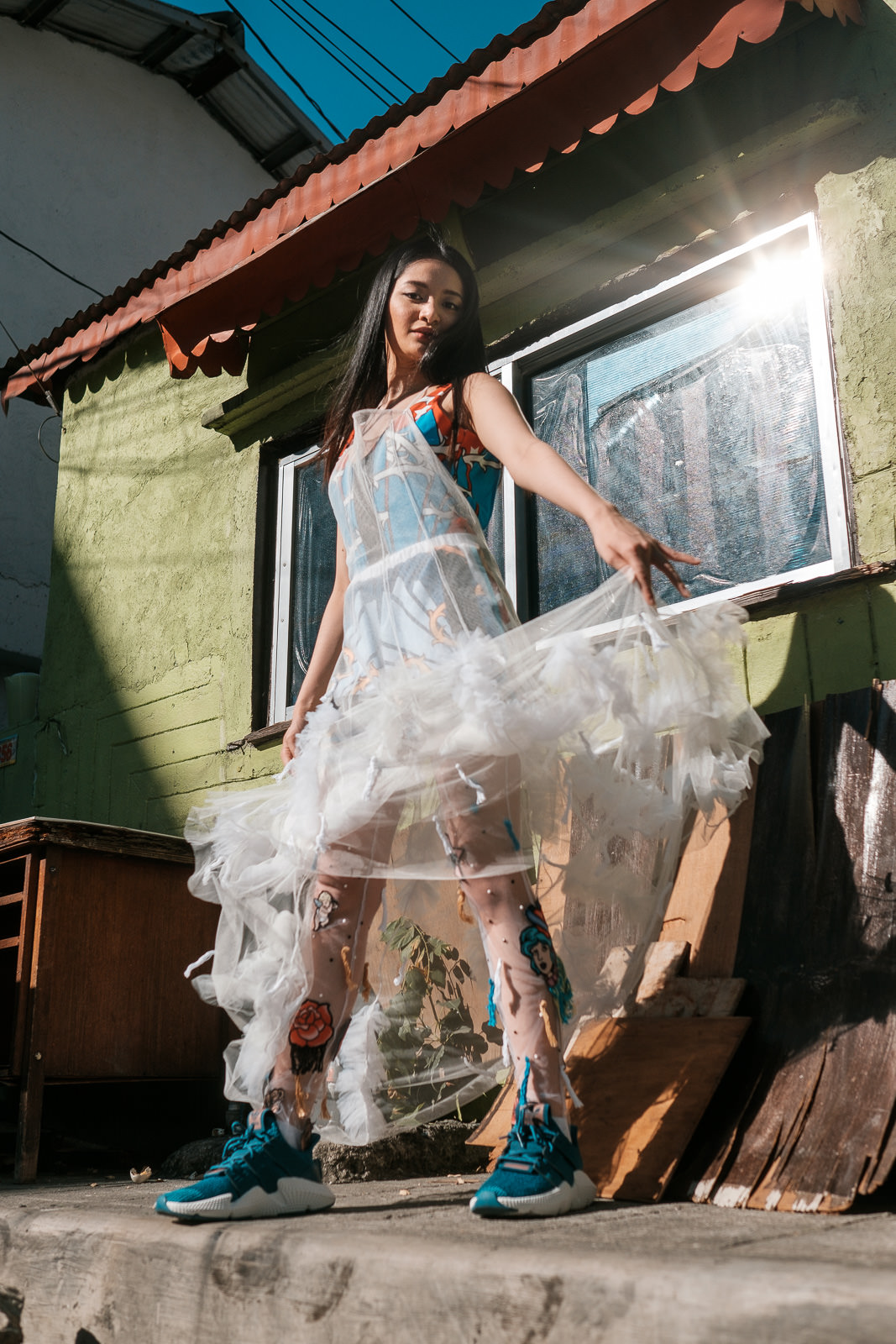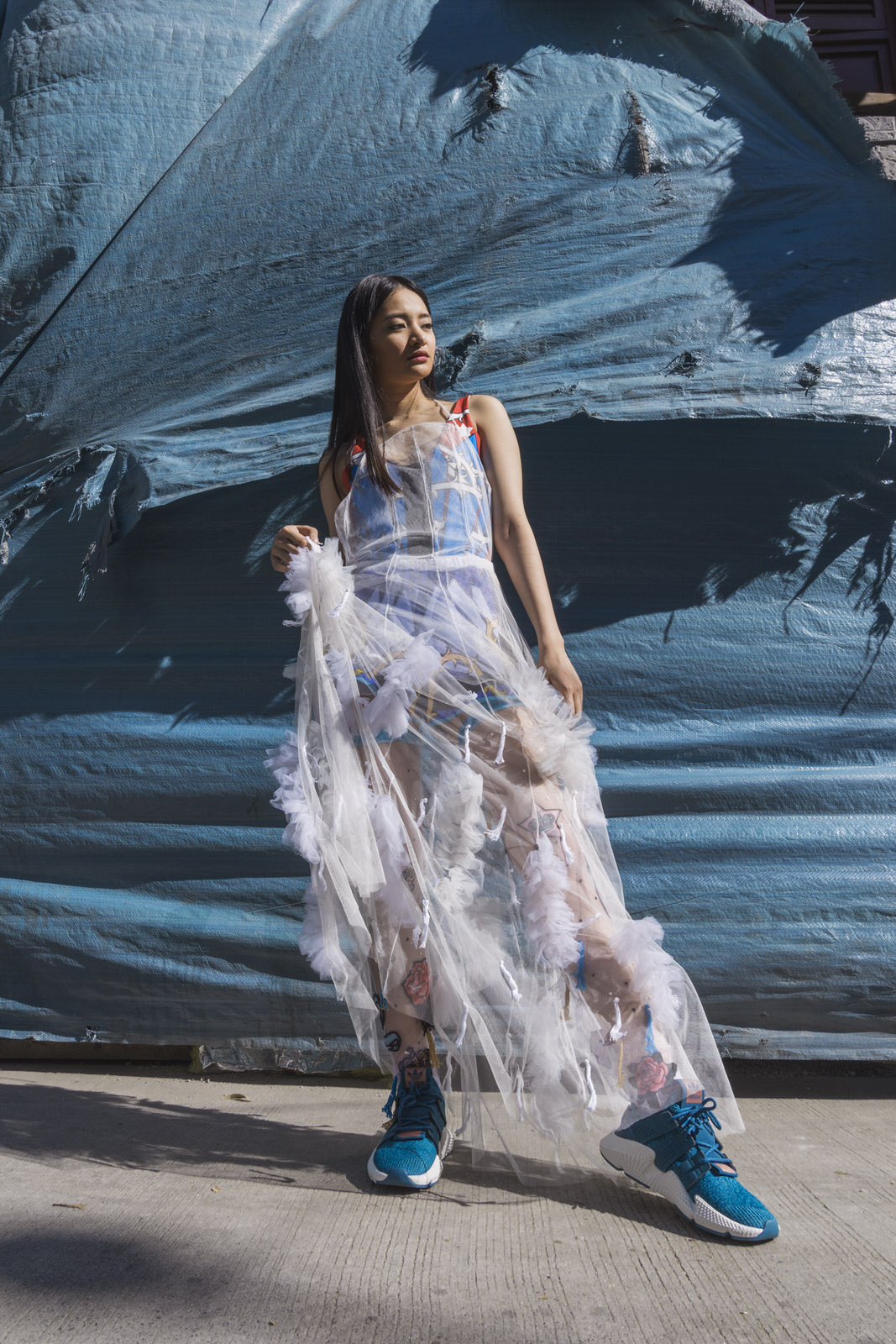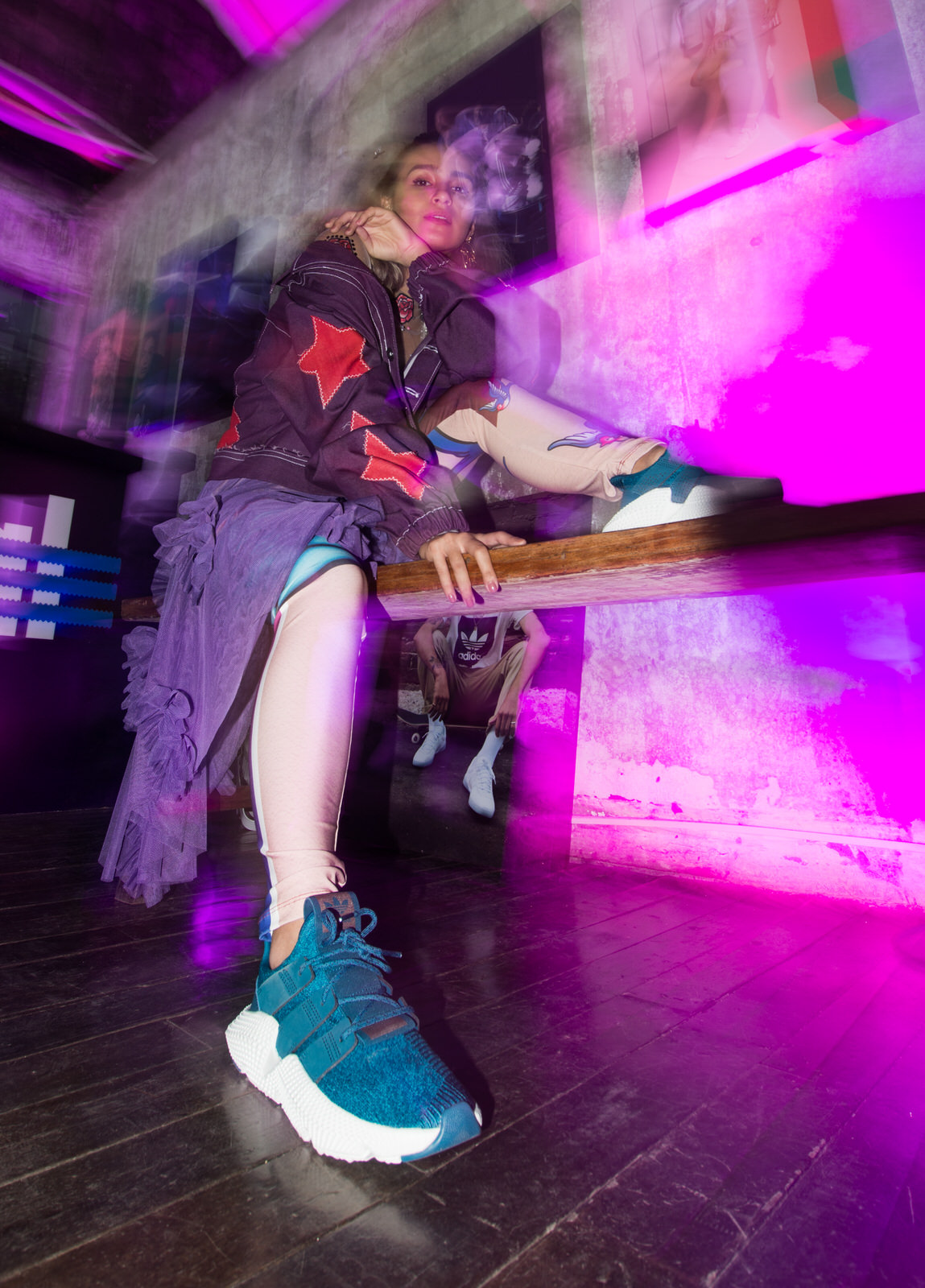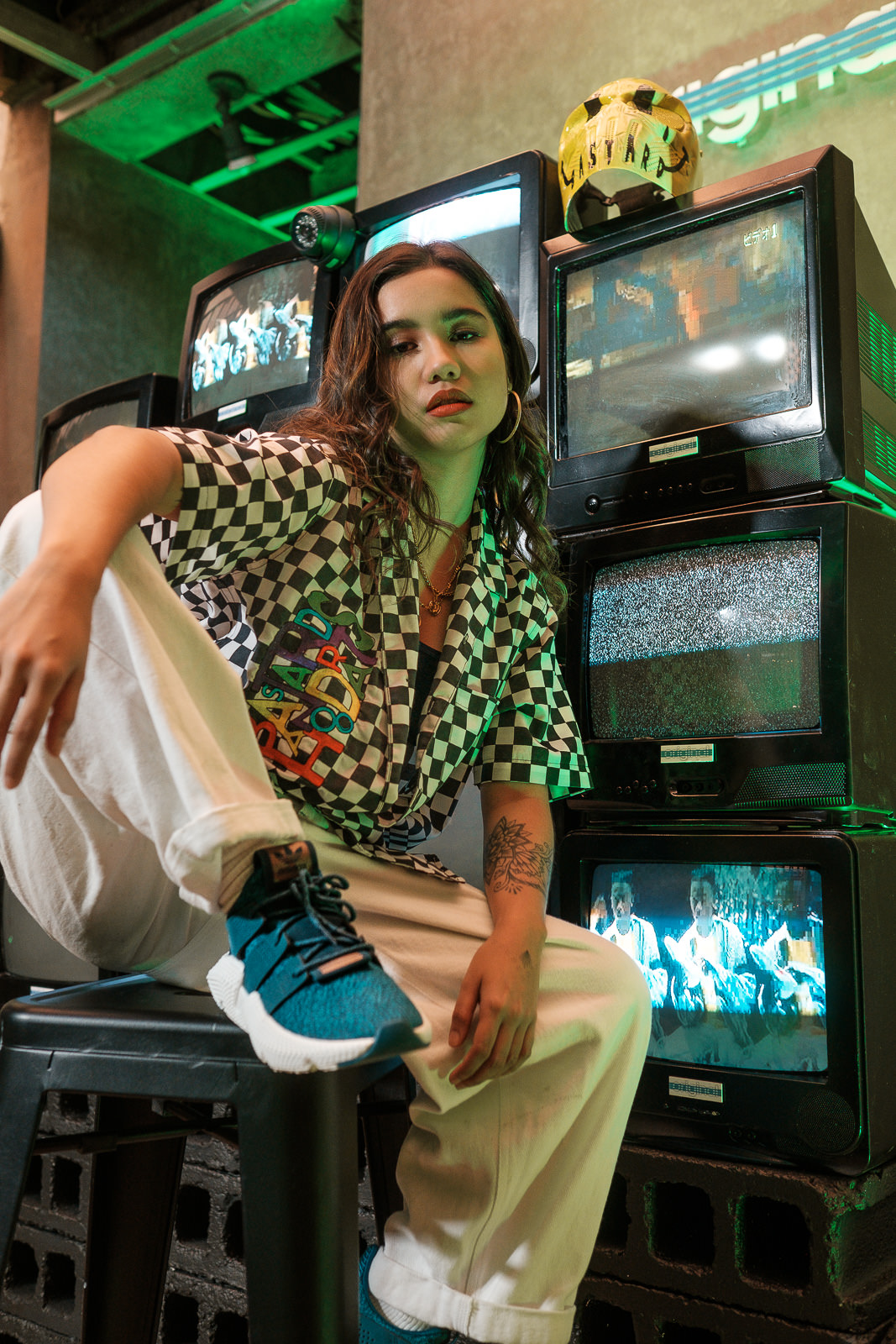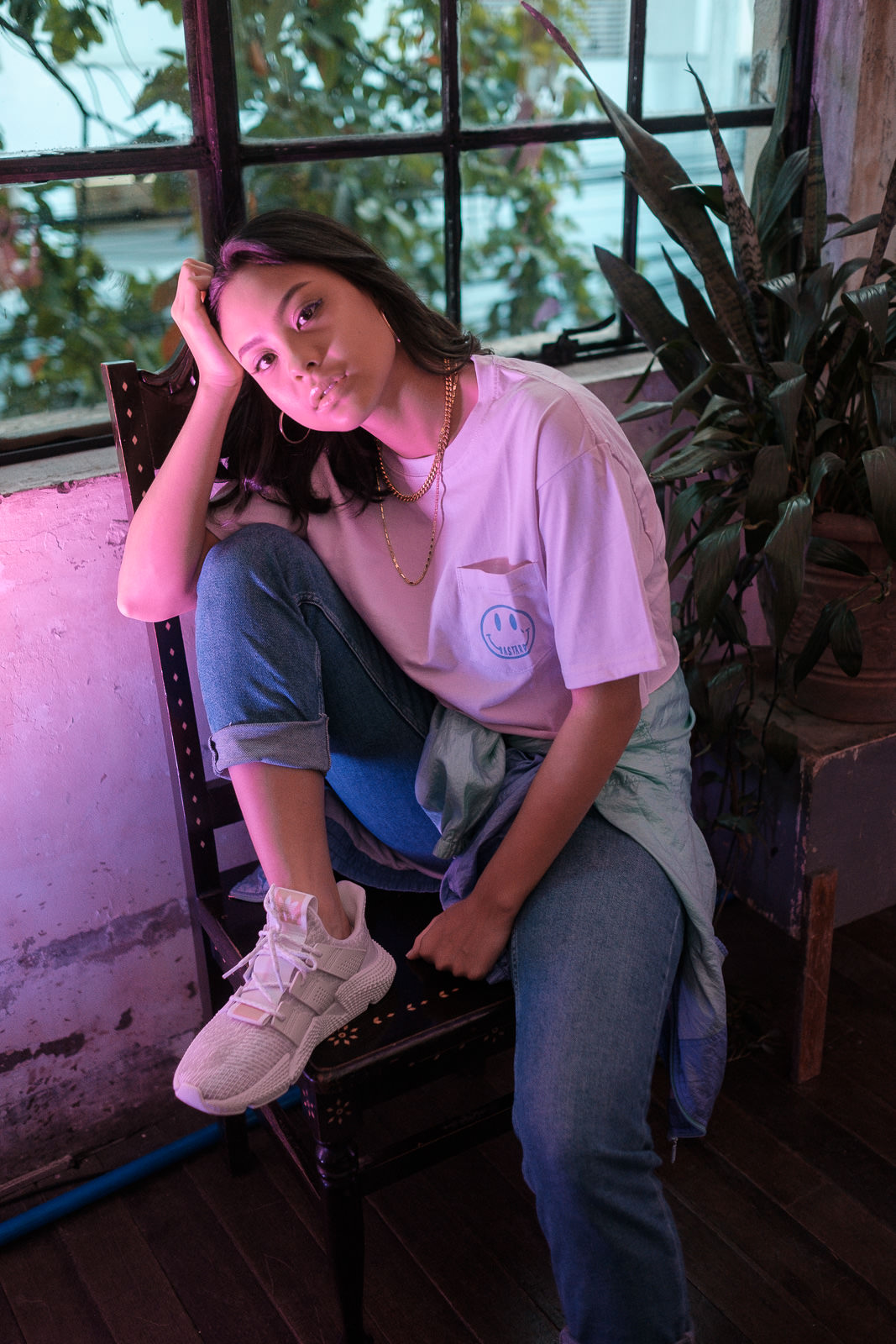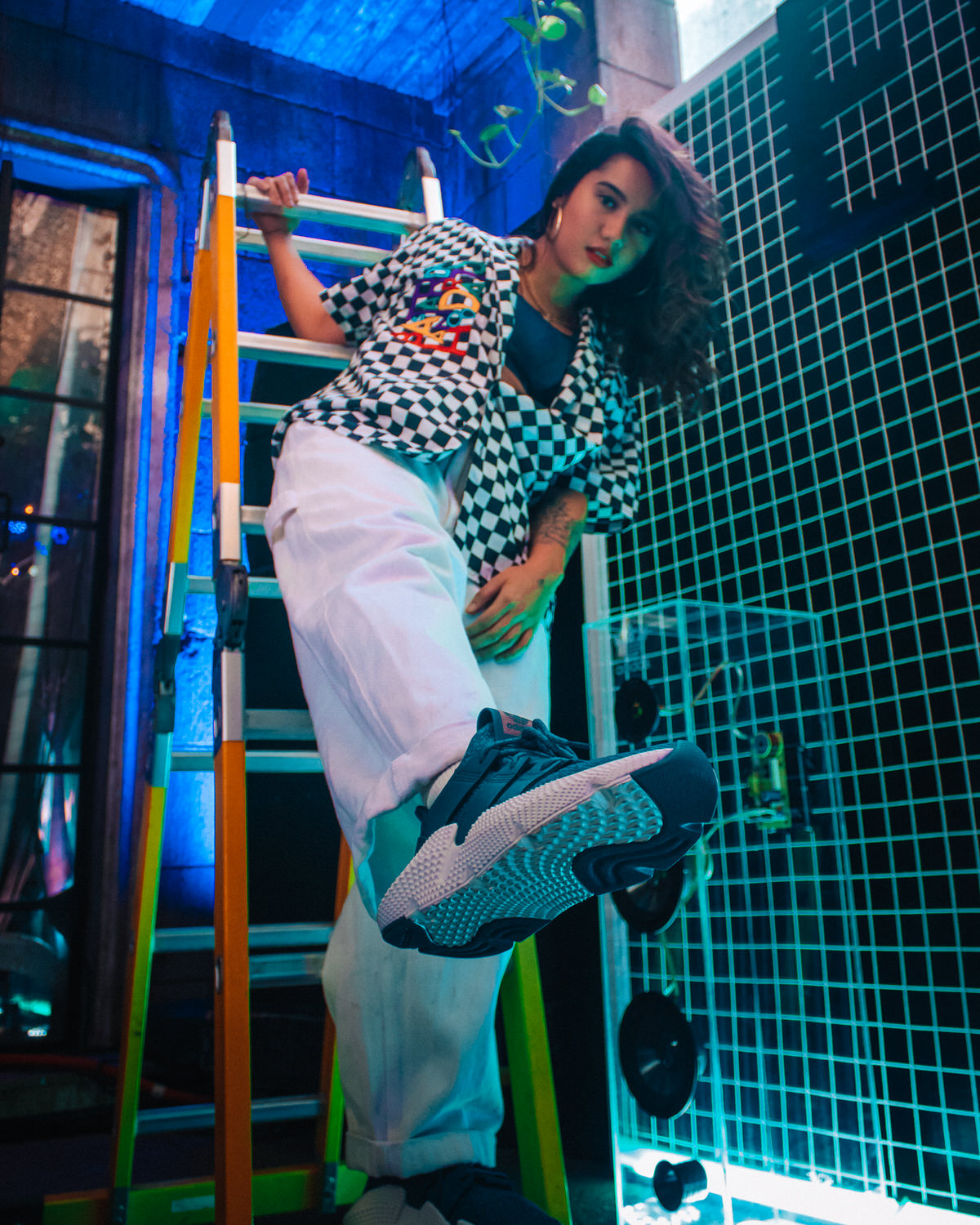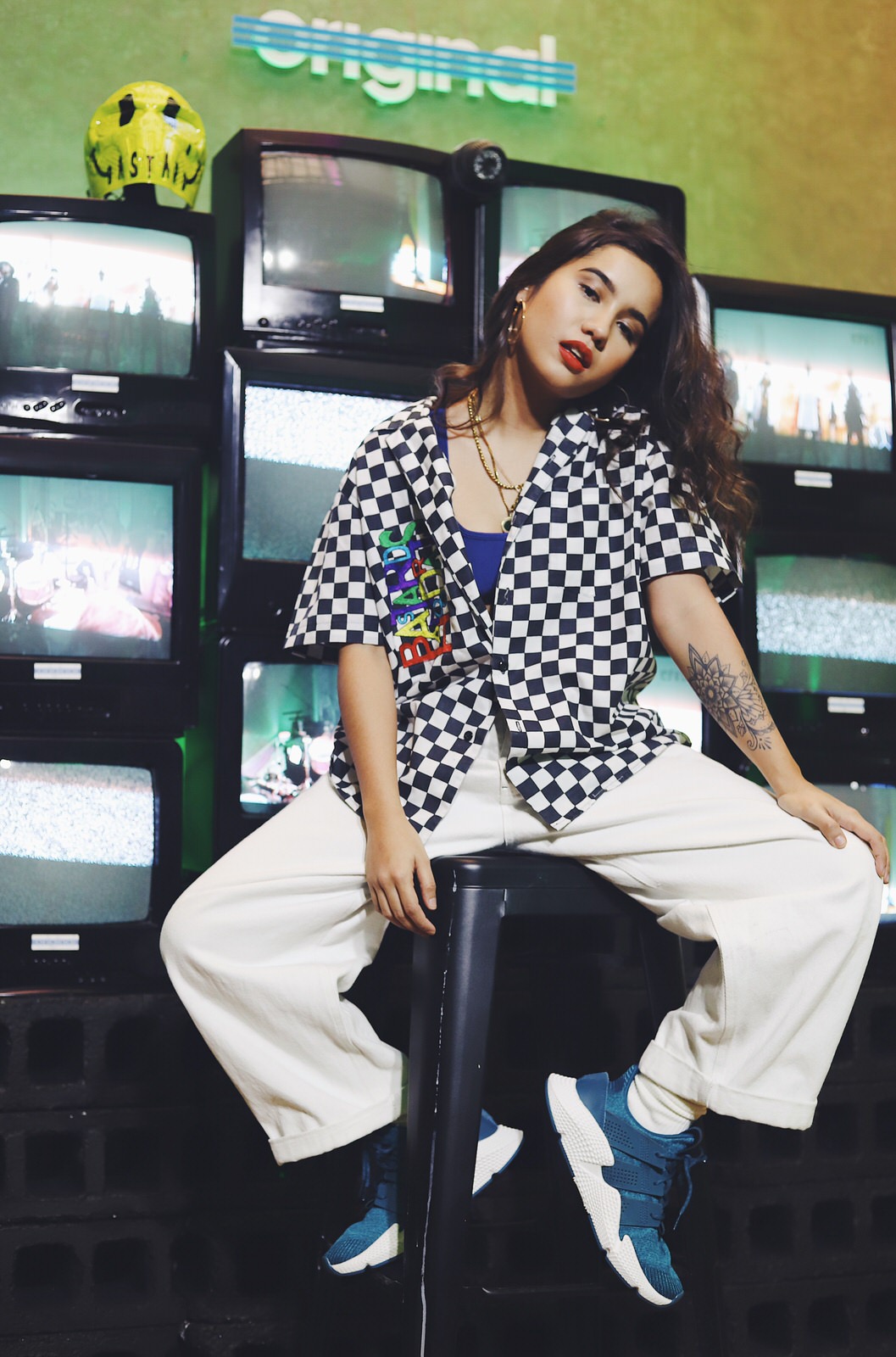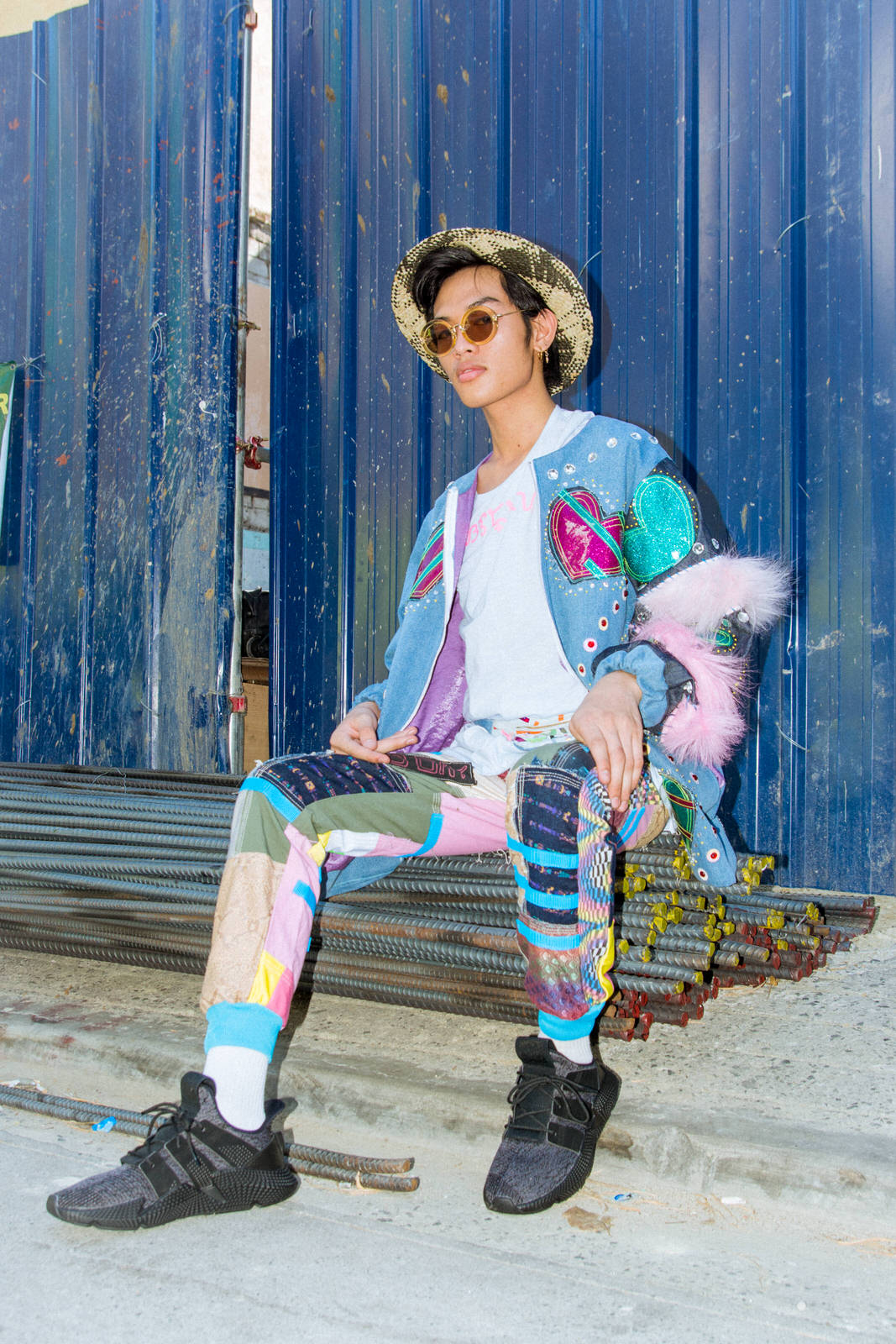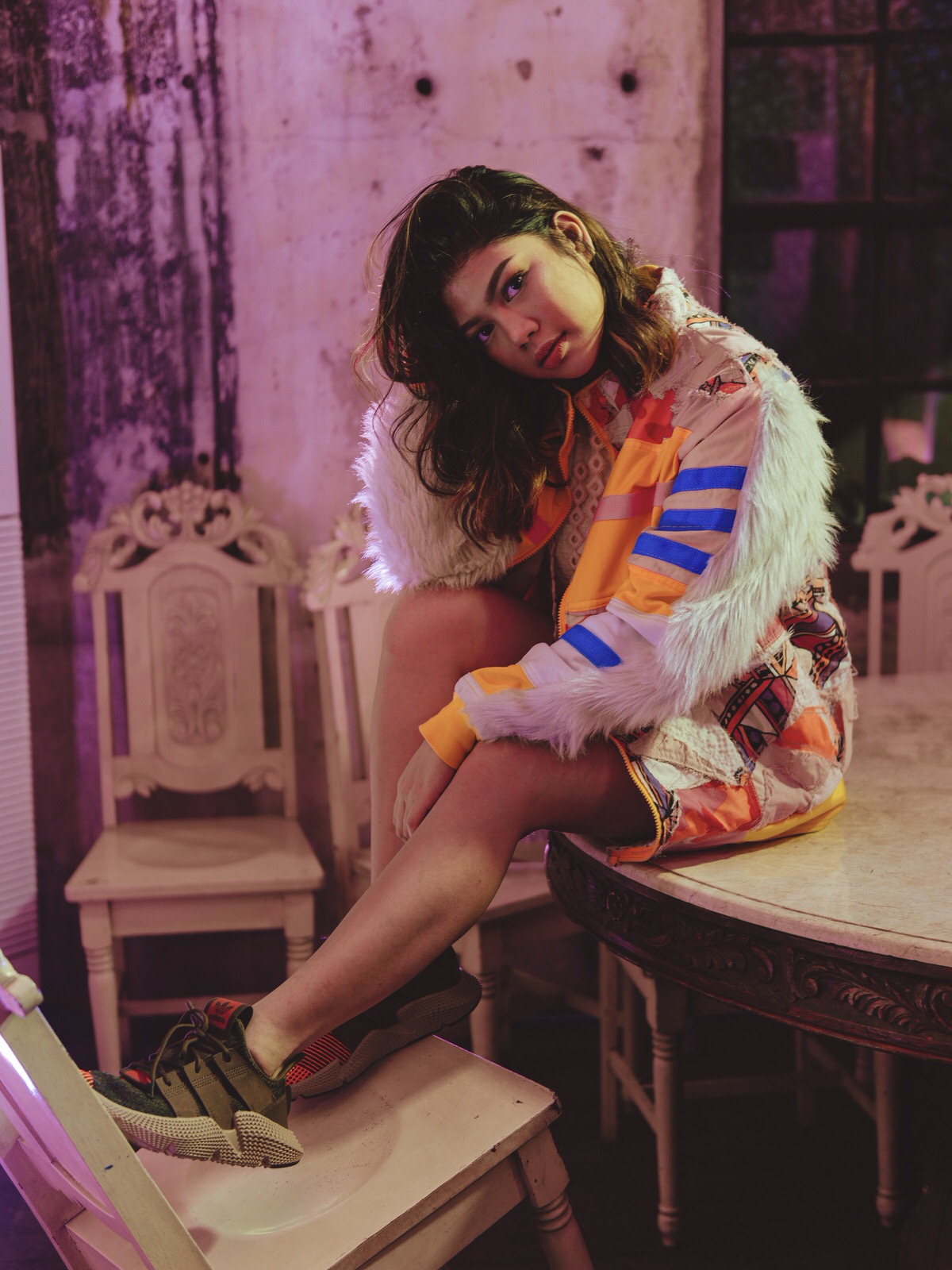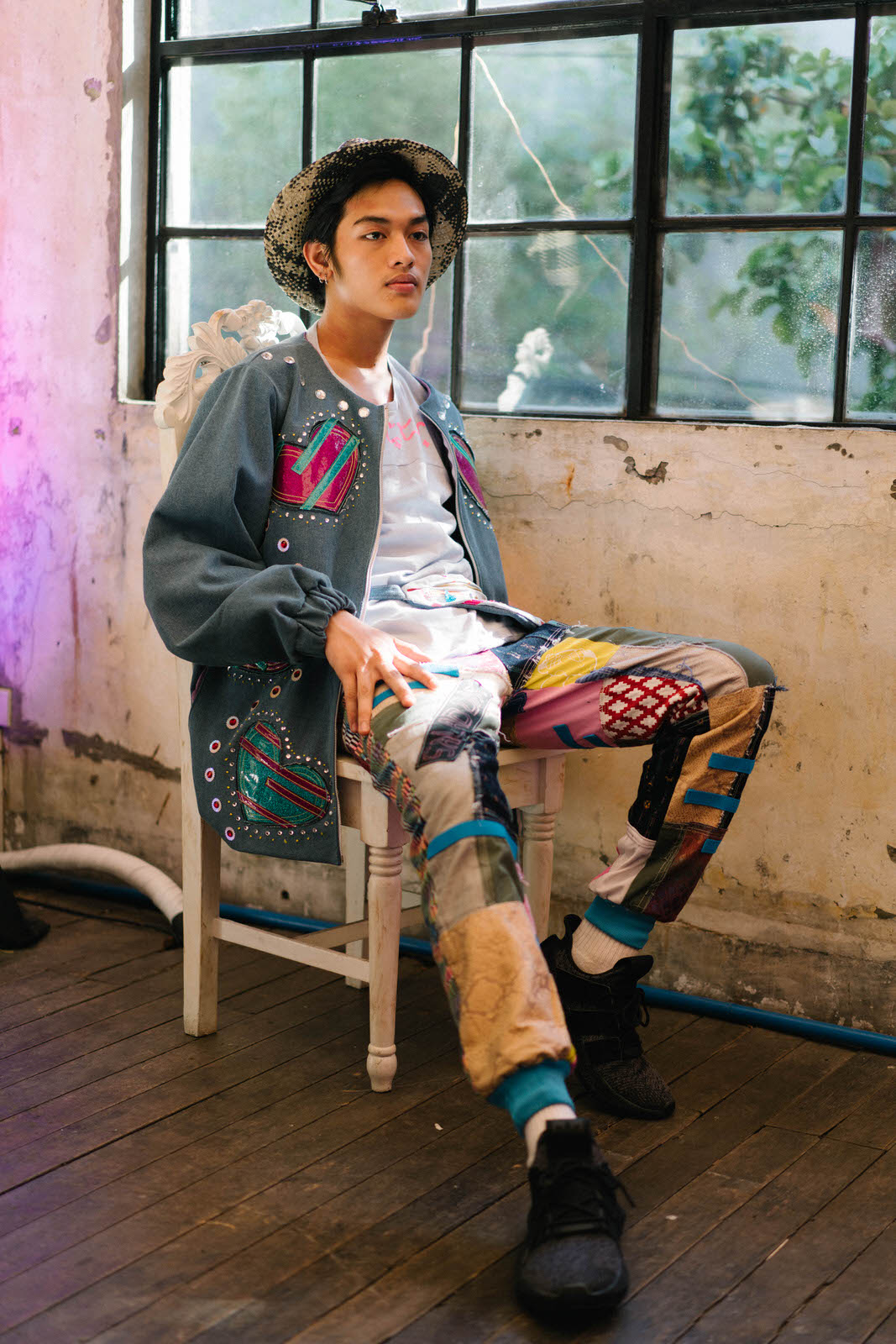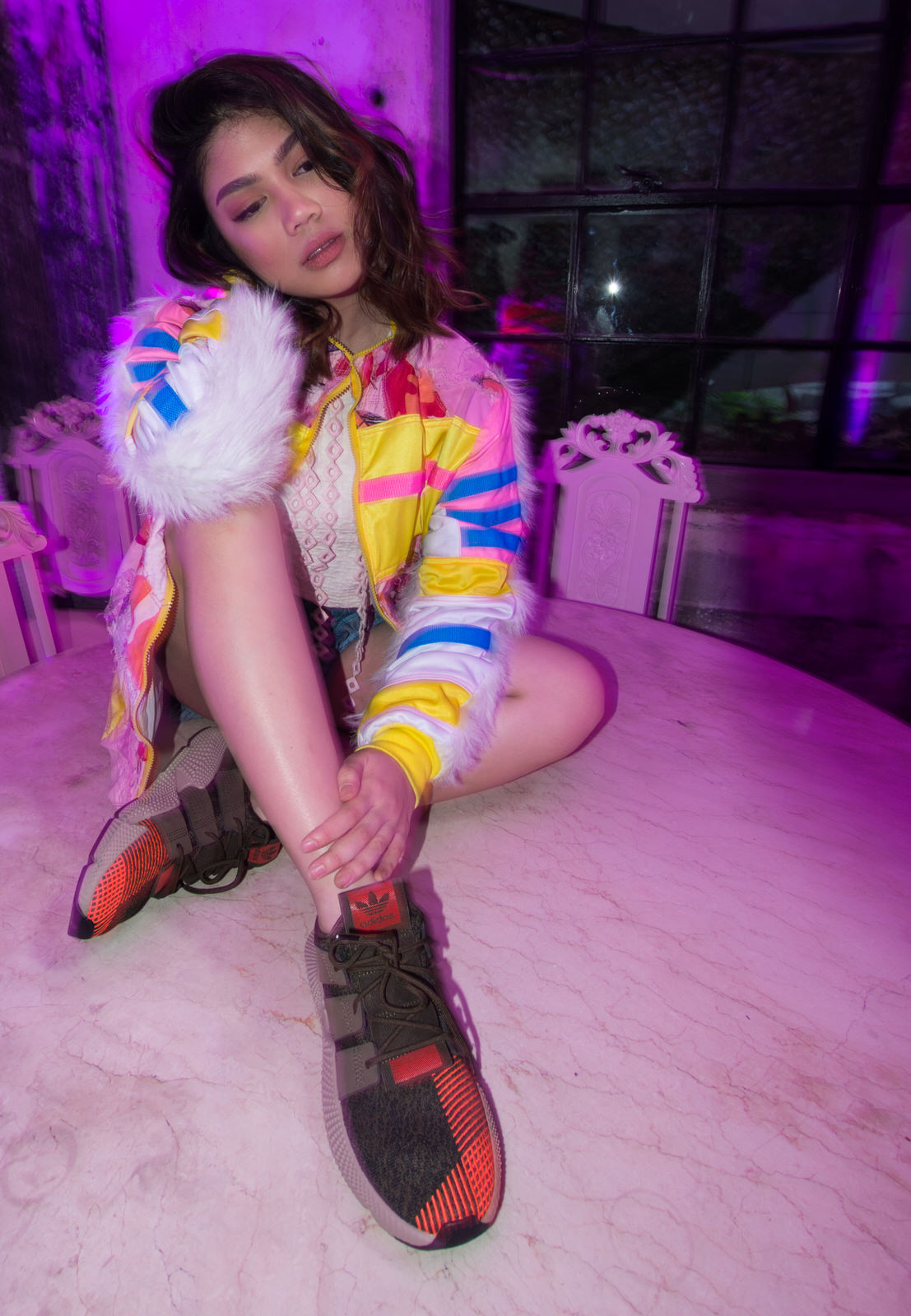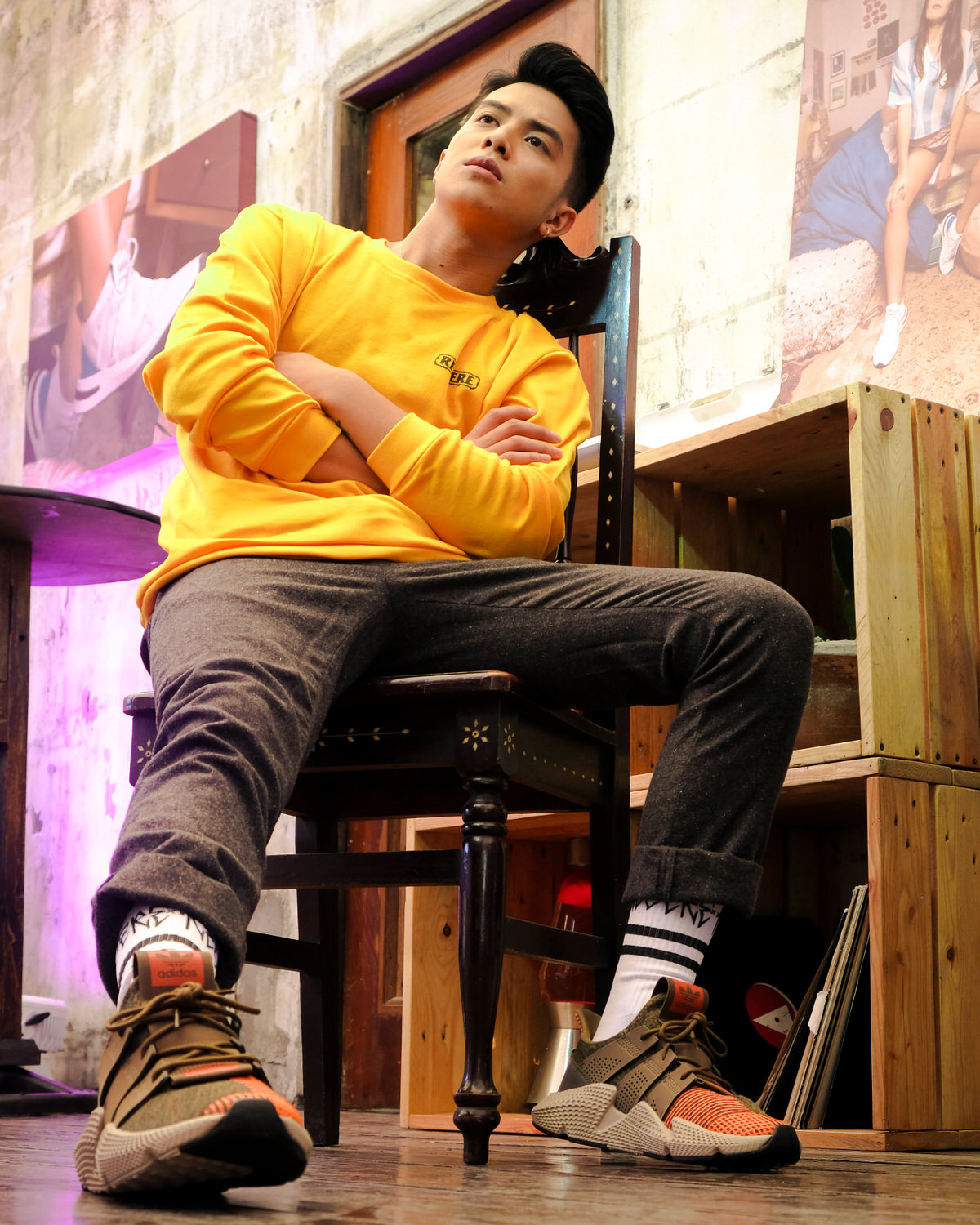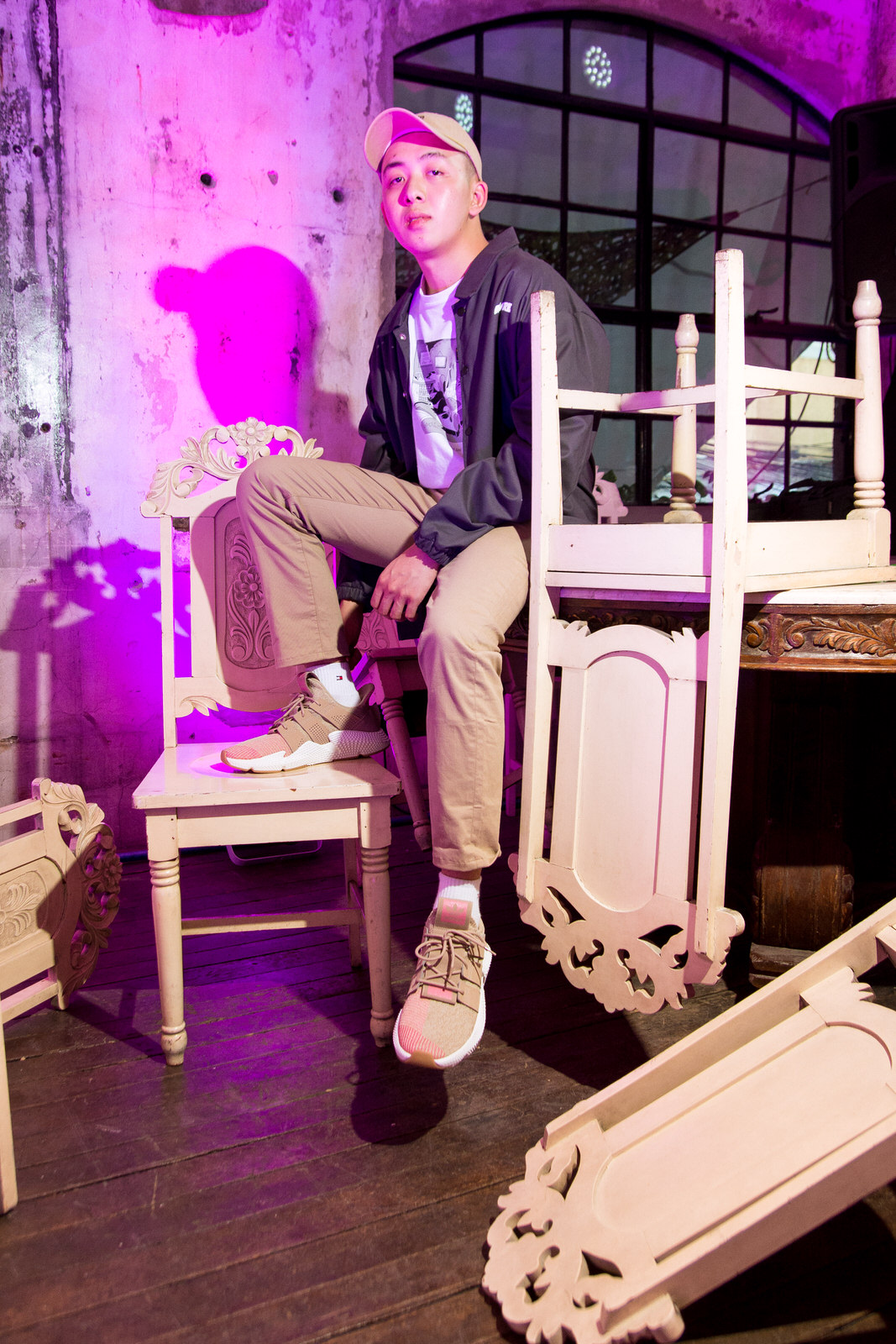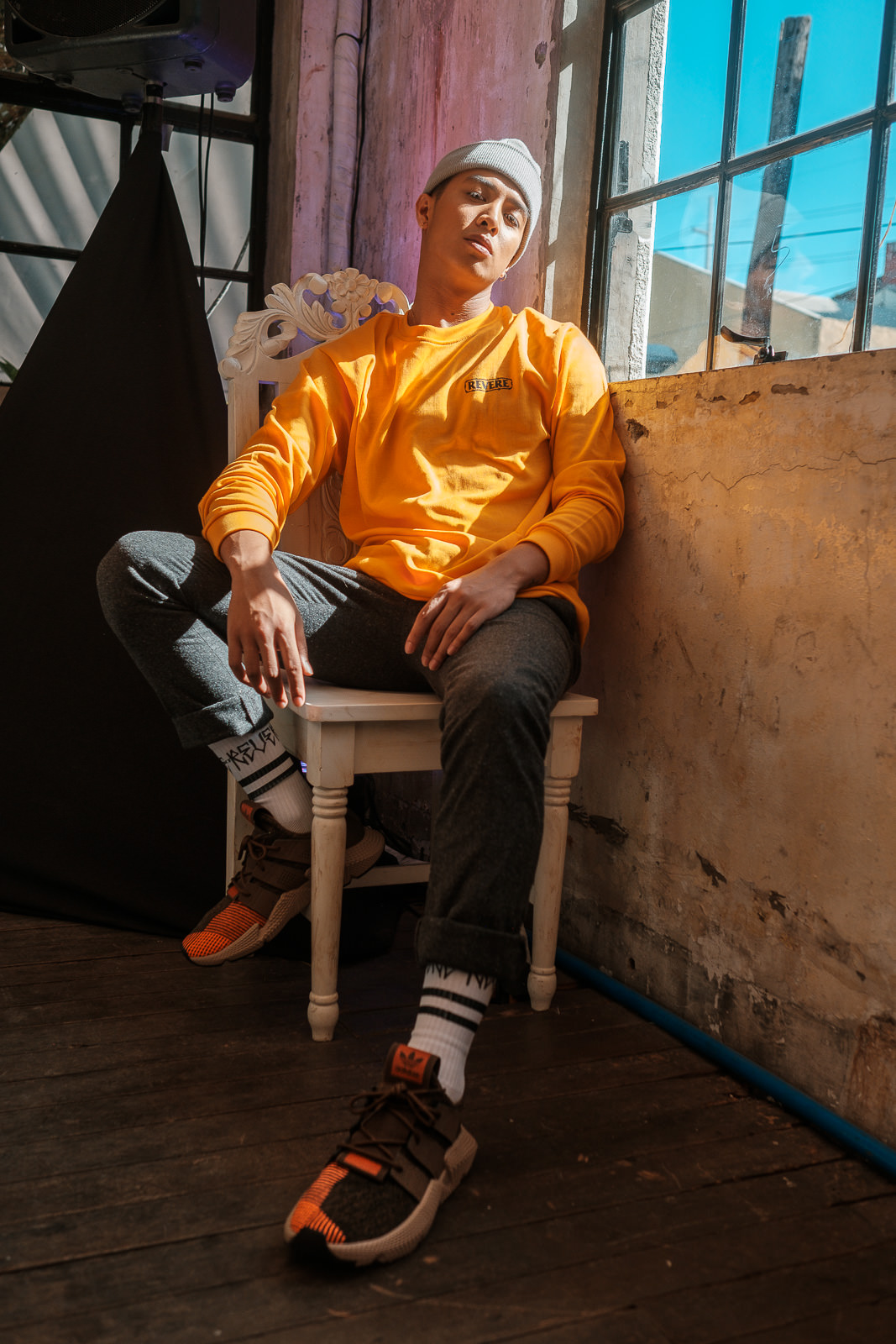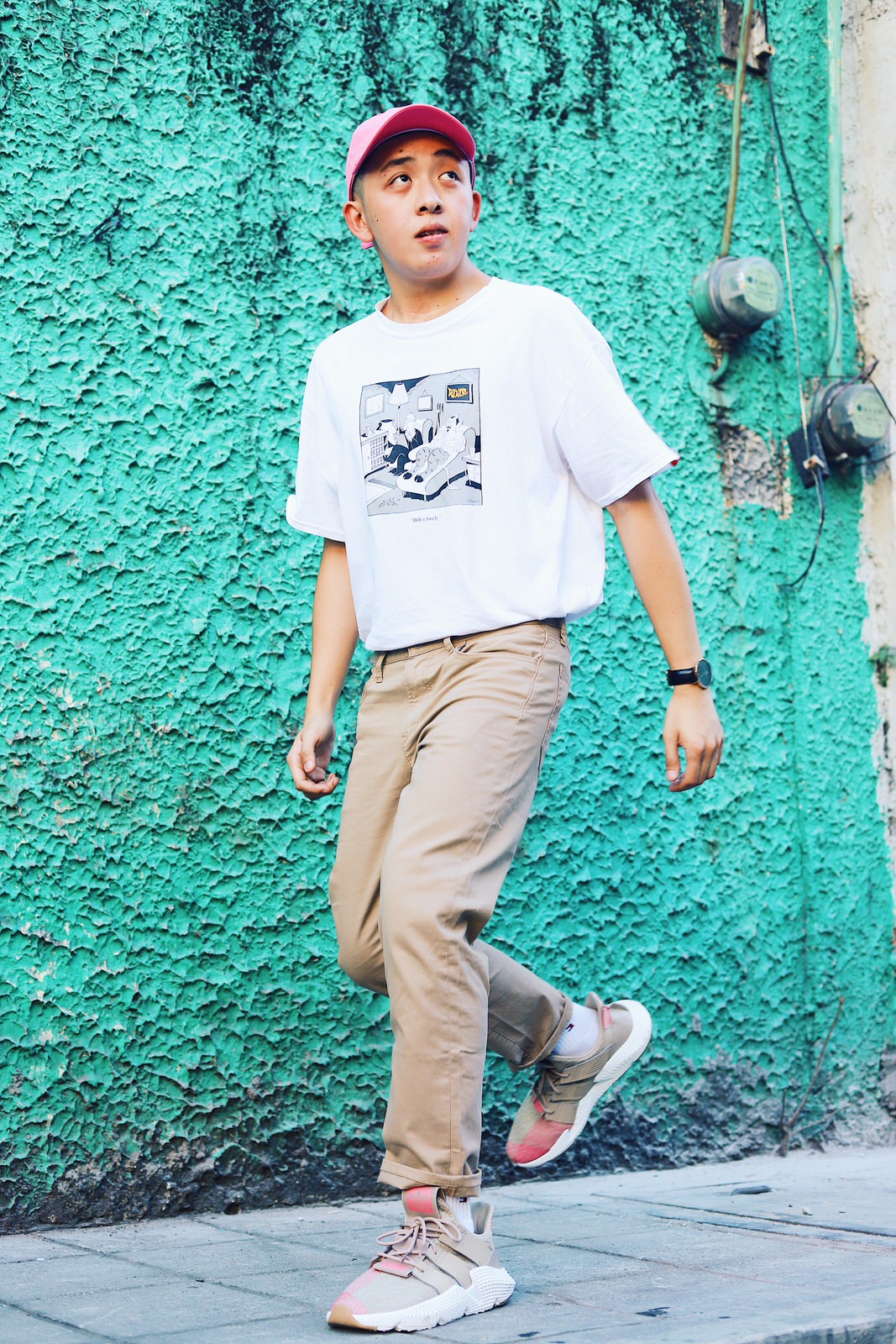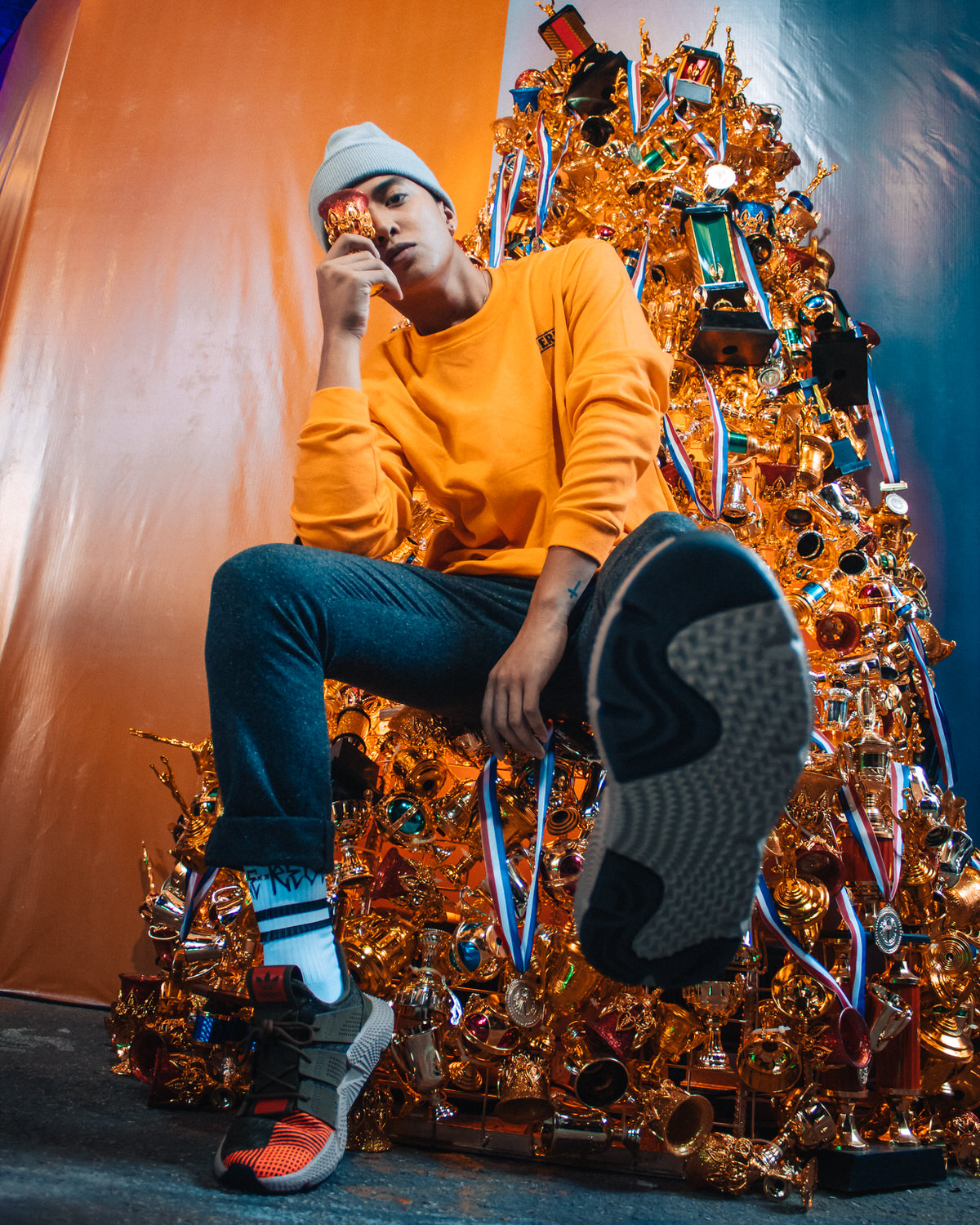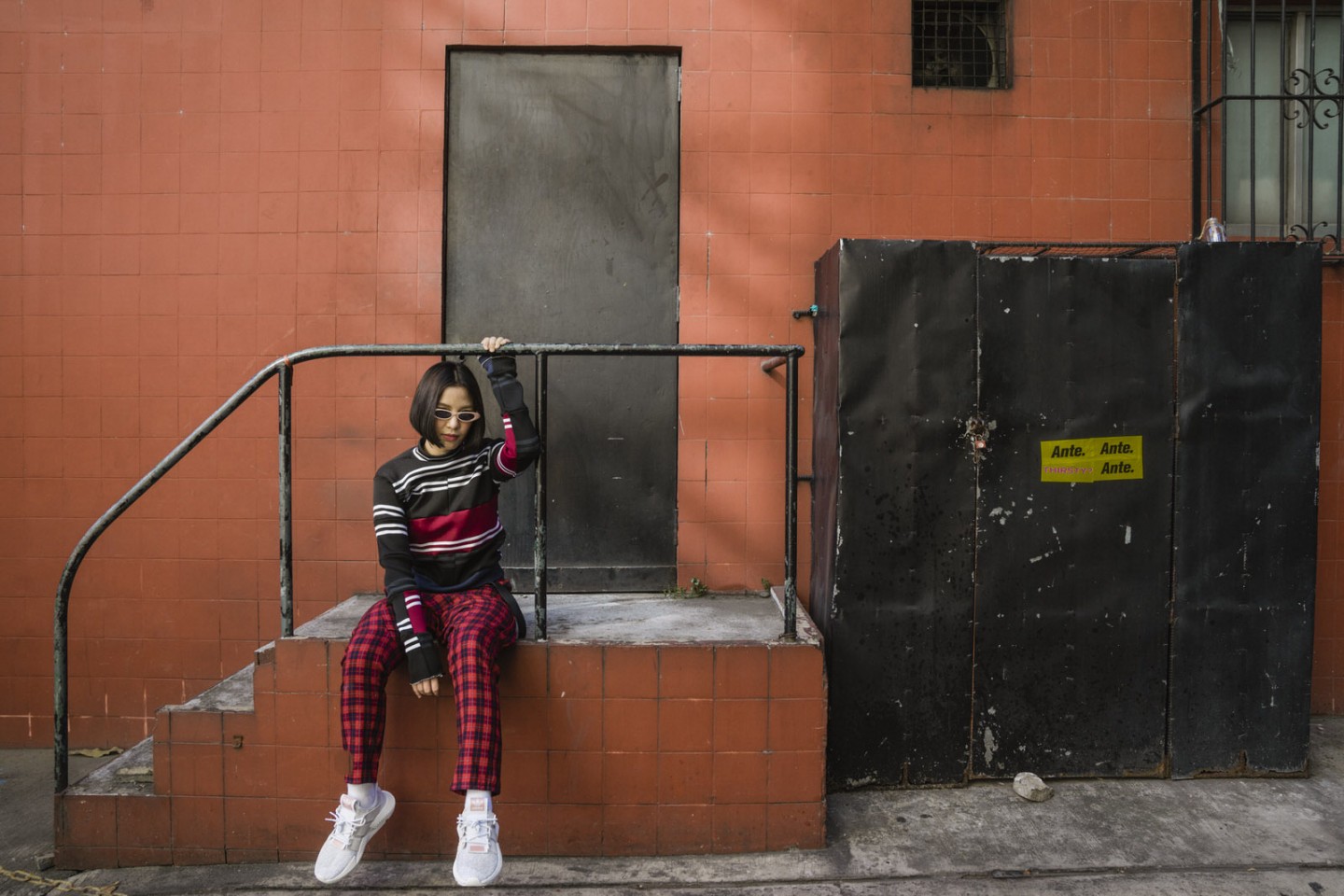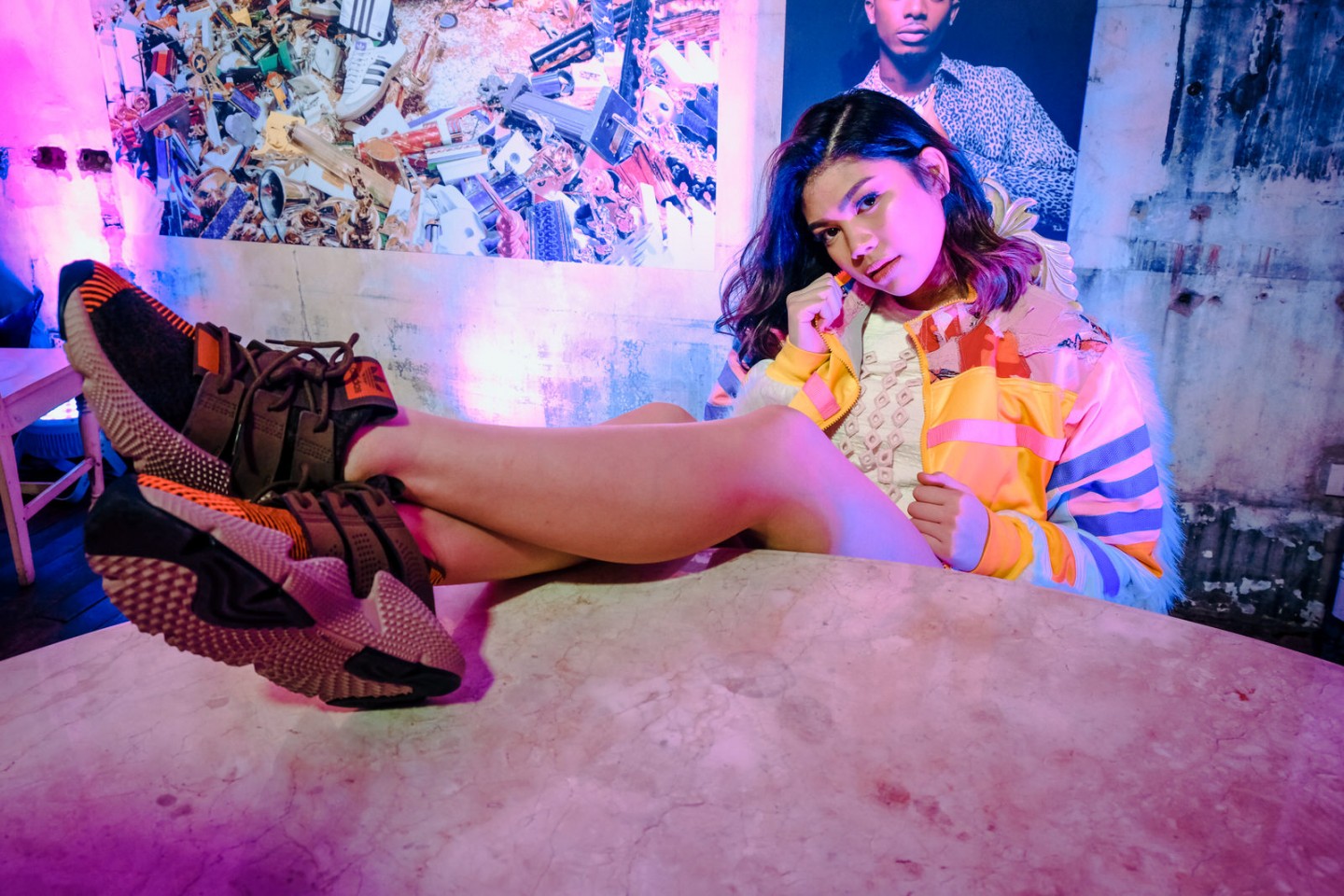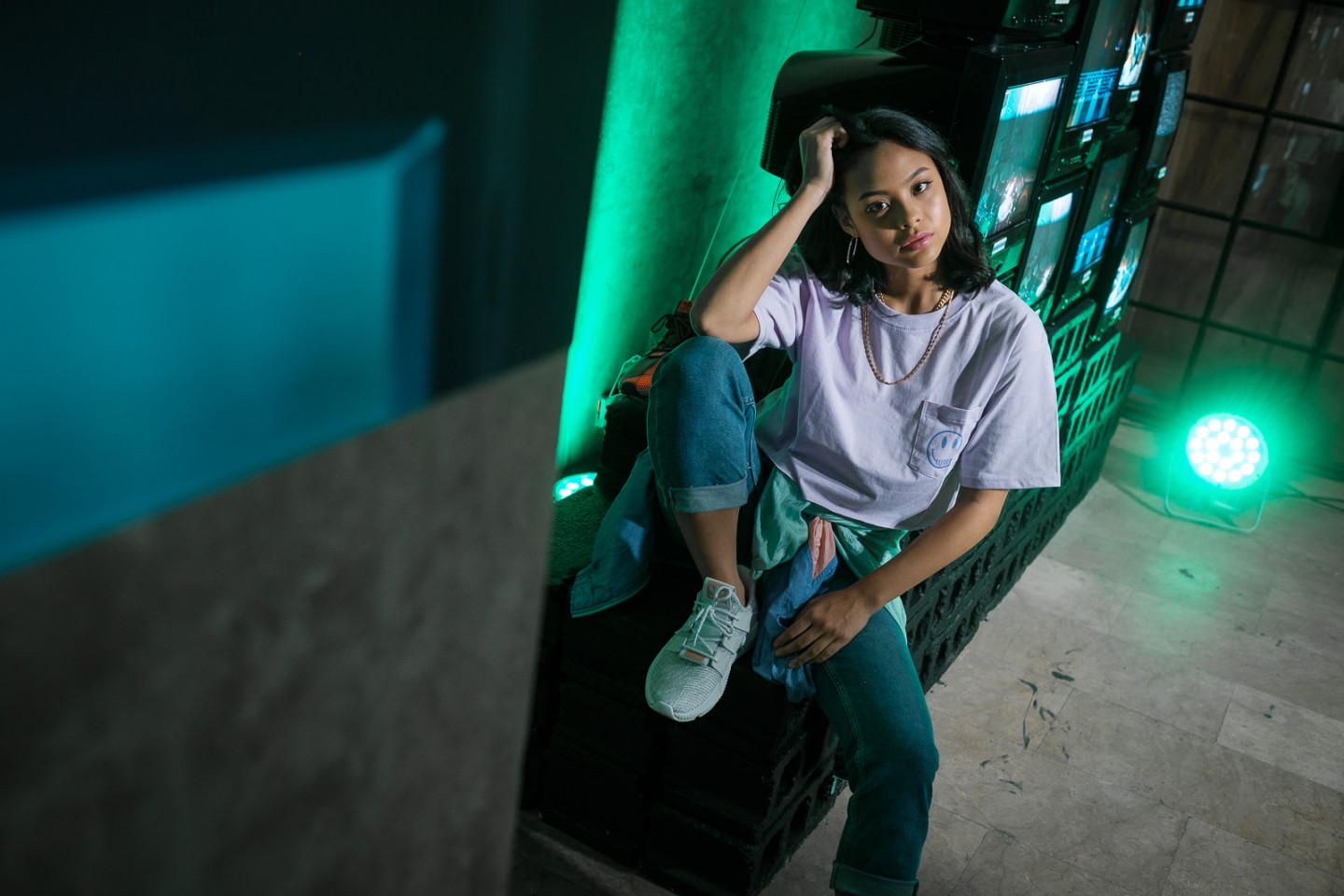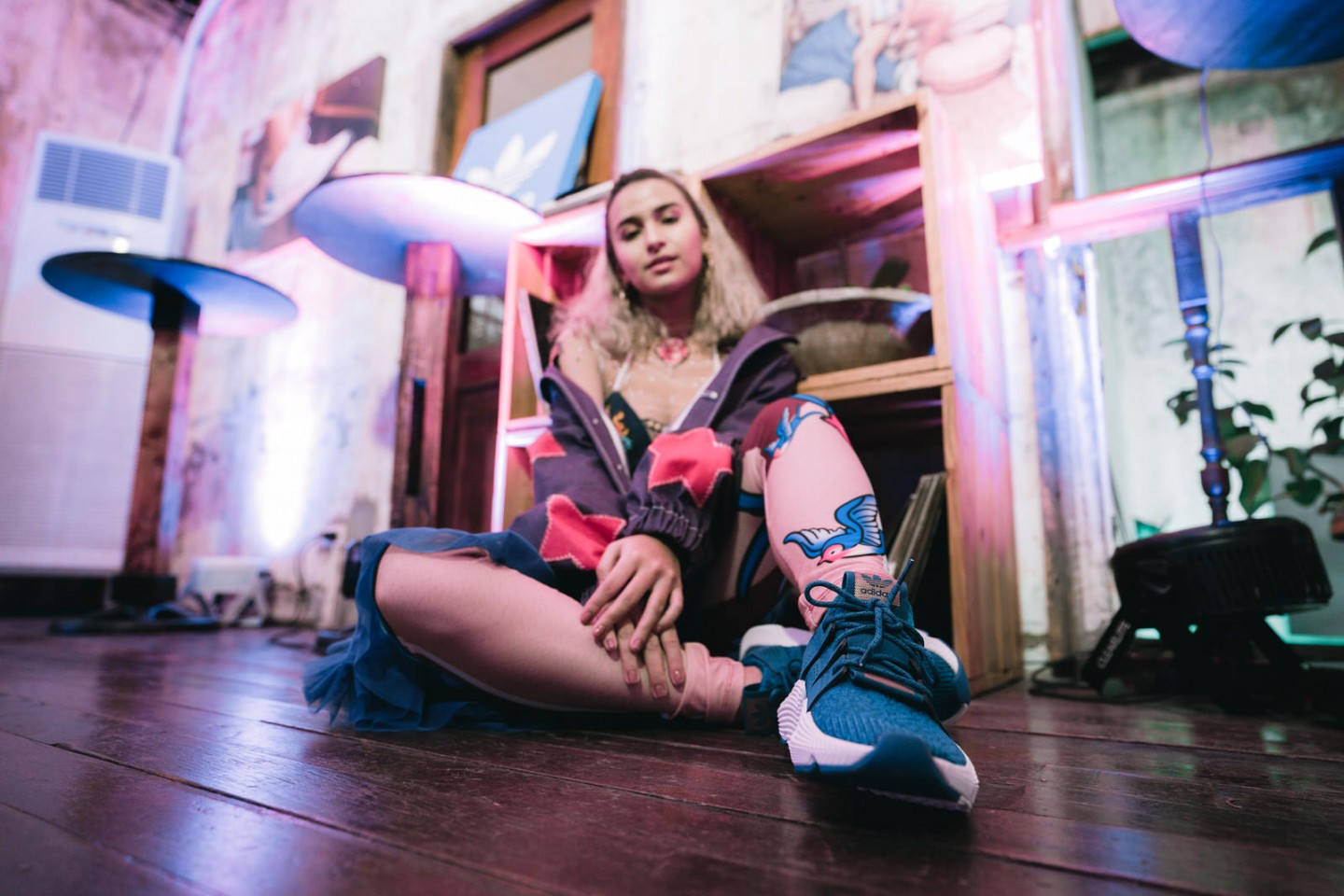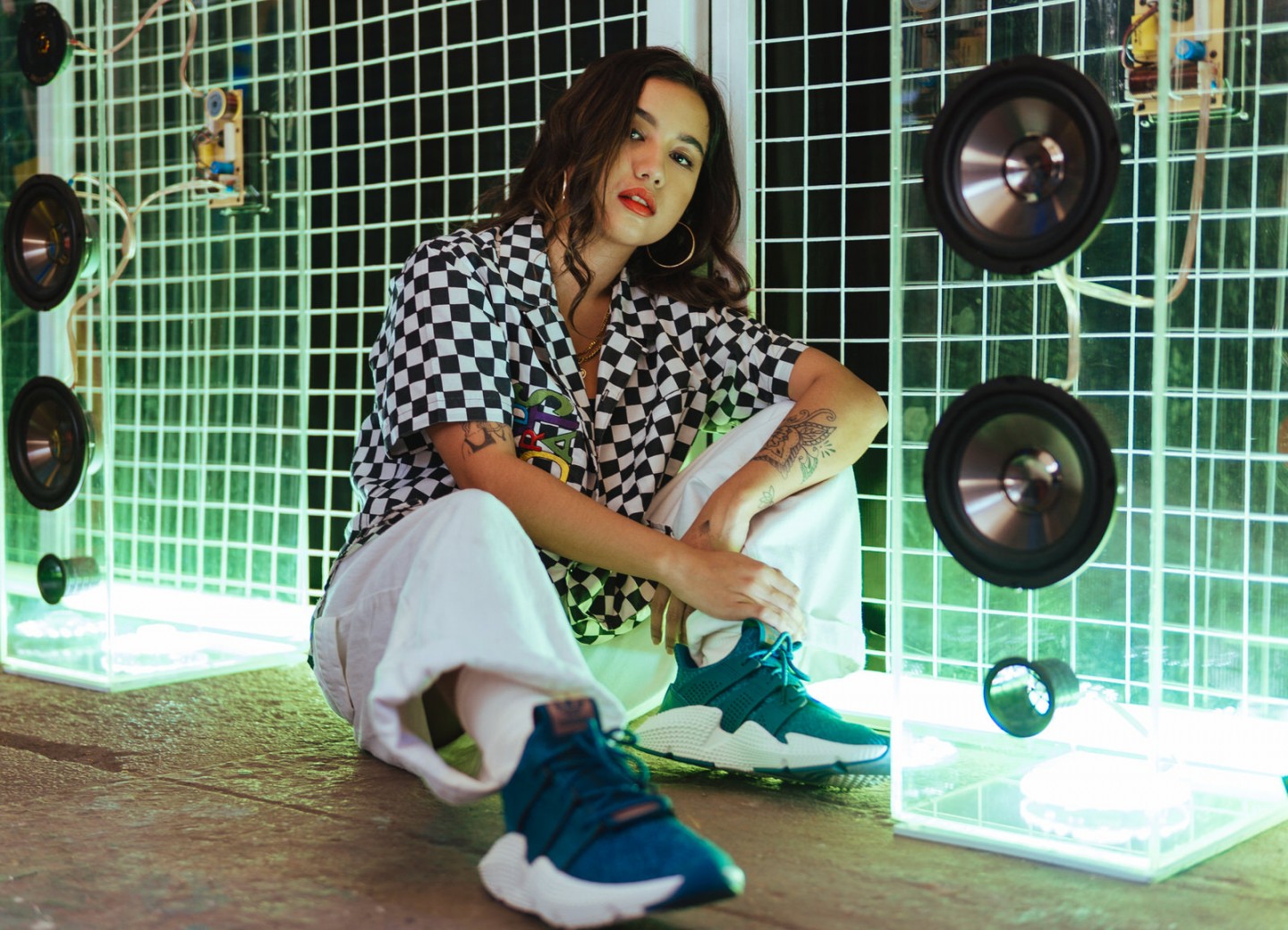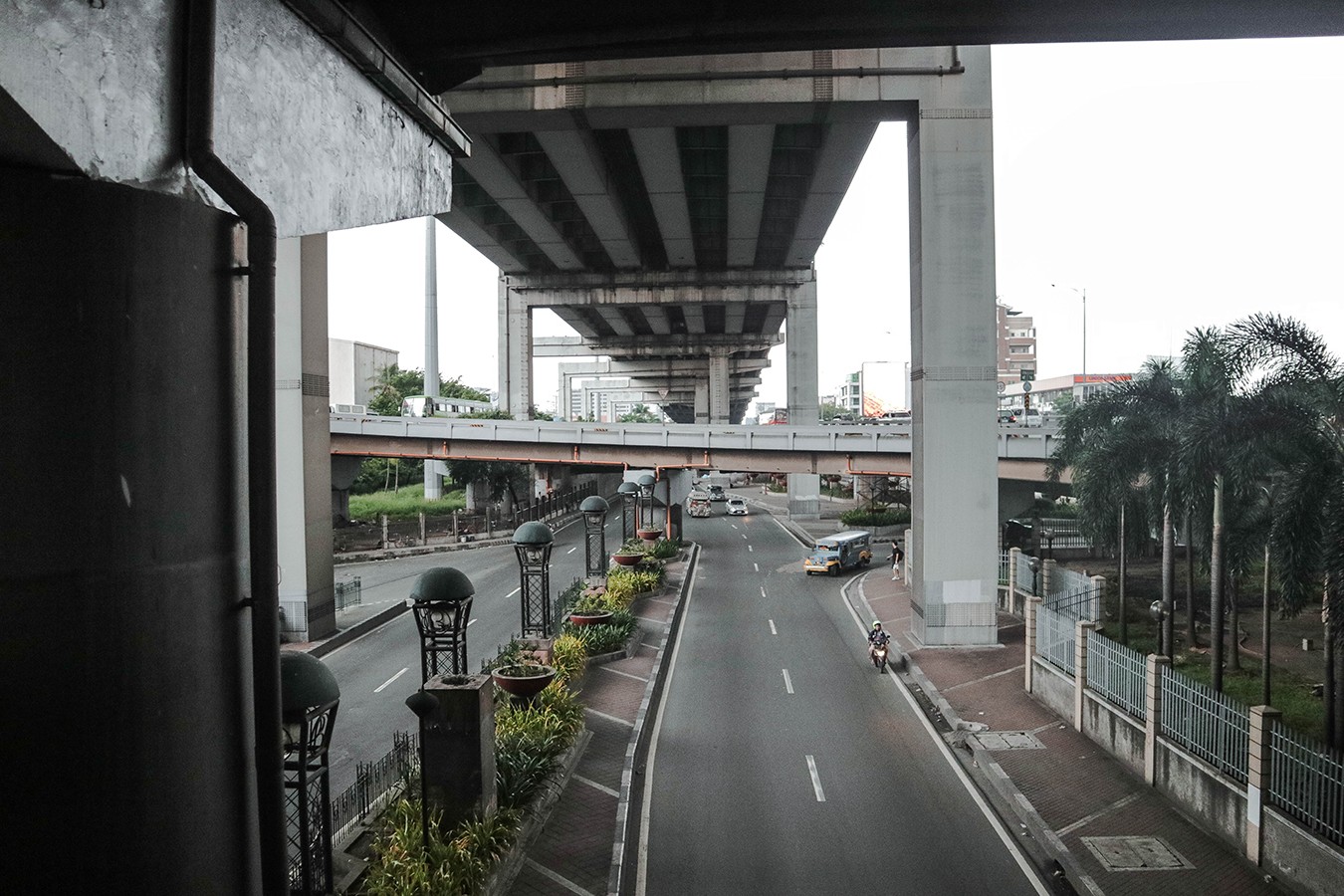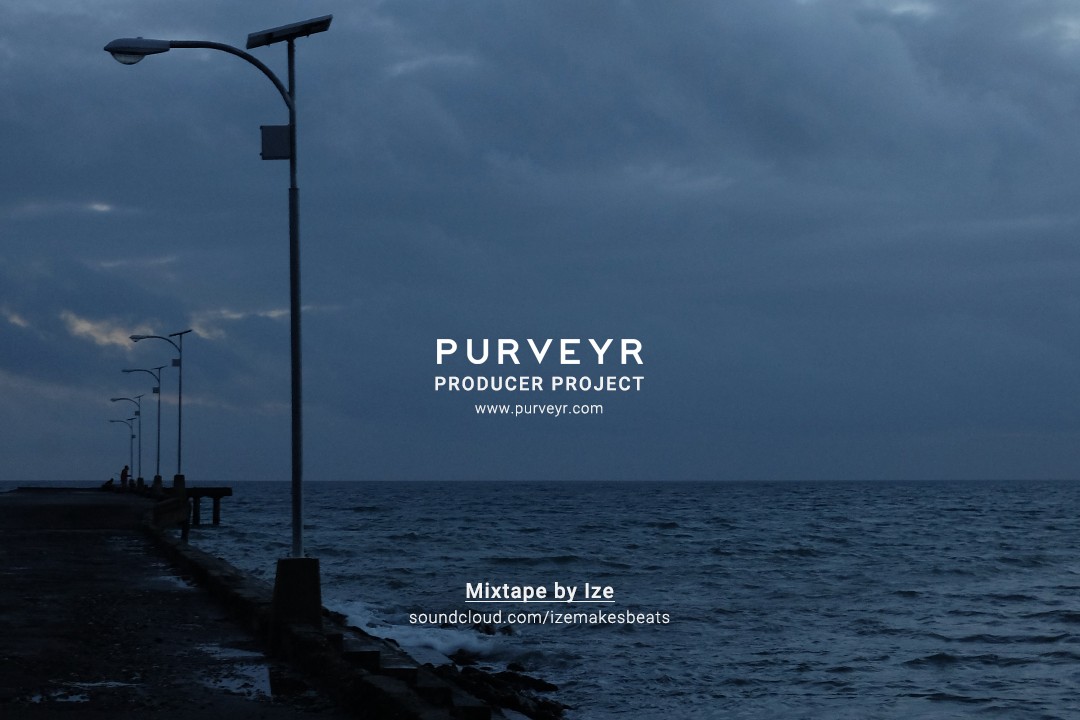In a time where there seems to be no shortage of brands on the market, it’s easy to look at your idols and put them on an unattainable, holy pedestal. But their success we romanticize is always just the tip of the iceberg, and often what lies beneath is a mountain of hard work that isn’t always as pretty. Yet, the people we look up to continue to be works in progress — a stark contrast to what others may deem finished. Local brands Proudrace, Randolf, Salad Day, Revere, and Bastard know not to aim for perfection, but progress. This endless pursuit of productivity is what keeps them on their feet and drives them to produce meaningful work. Ultimately, constant reinvention has also helped them to evolve and contribute to a thriving community of creators.
Inspired by the #OriginalisNeverFinished campaign in partnership with adidas Originals, we sought out to explore the essence of progress through the stories of 5 thriving local brands. Here, these entrepreneurs and creatives share their roots in the fashion industry, their journey in establishing their brands, and what it means to be #NeverFinished. We spoke to the brand owners to discover their roots in the local fashion industry. Find out about their journeys in establishing their brands, and what exactly progress means to them.
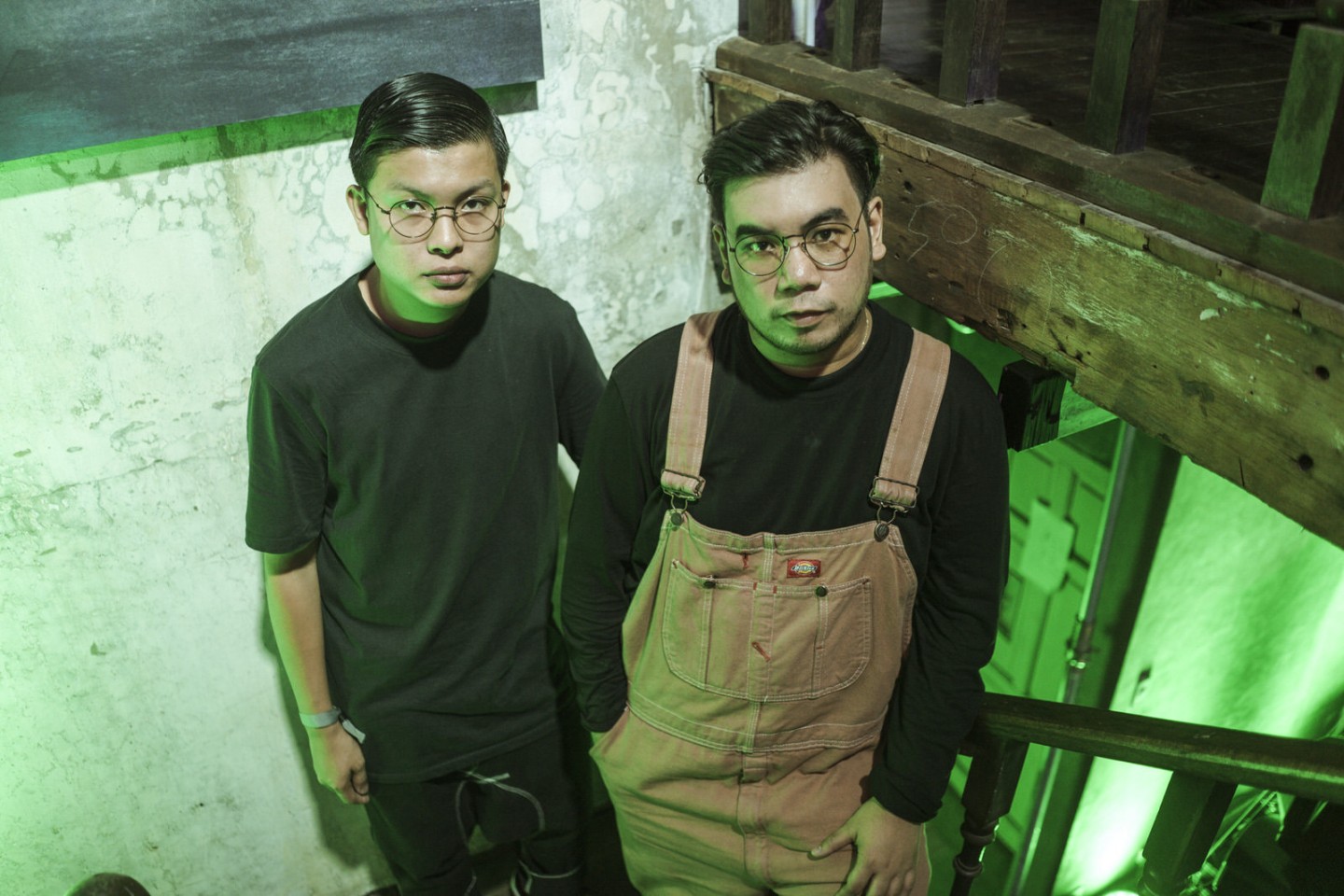

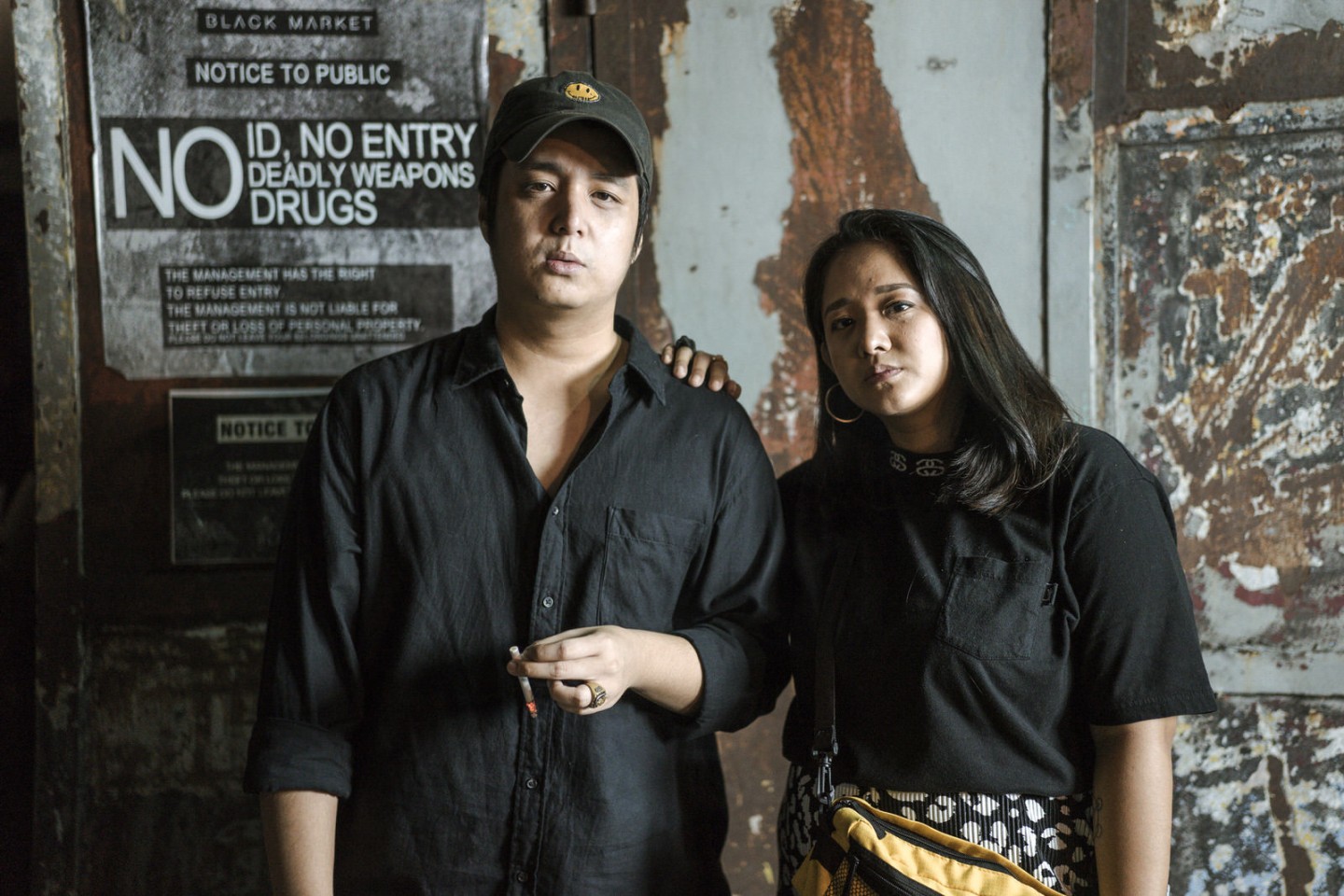
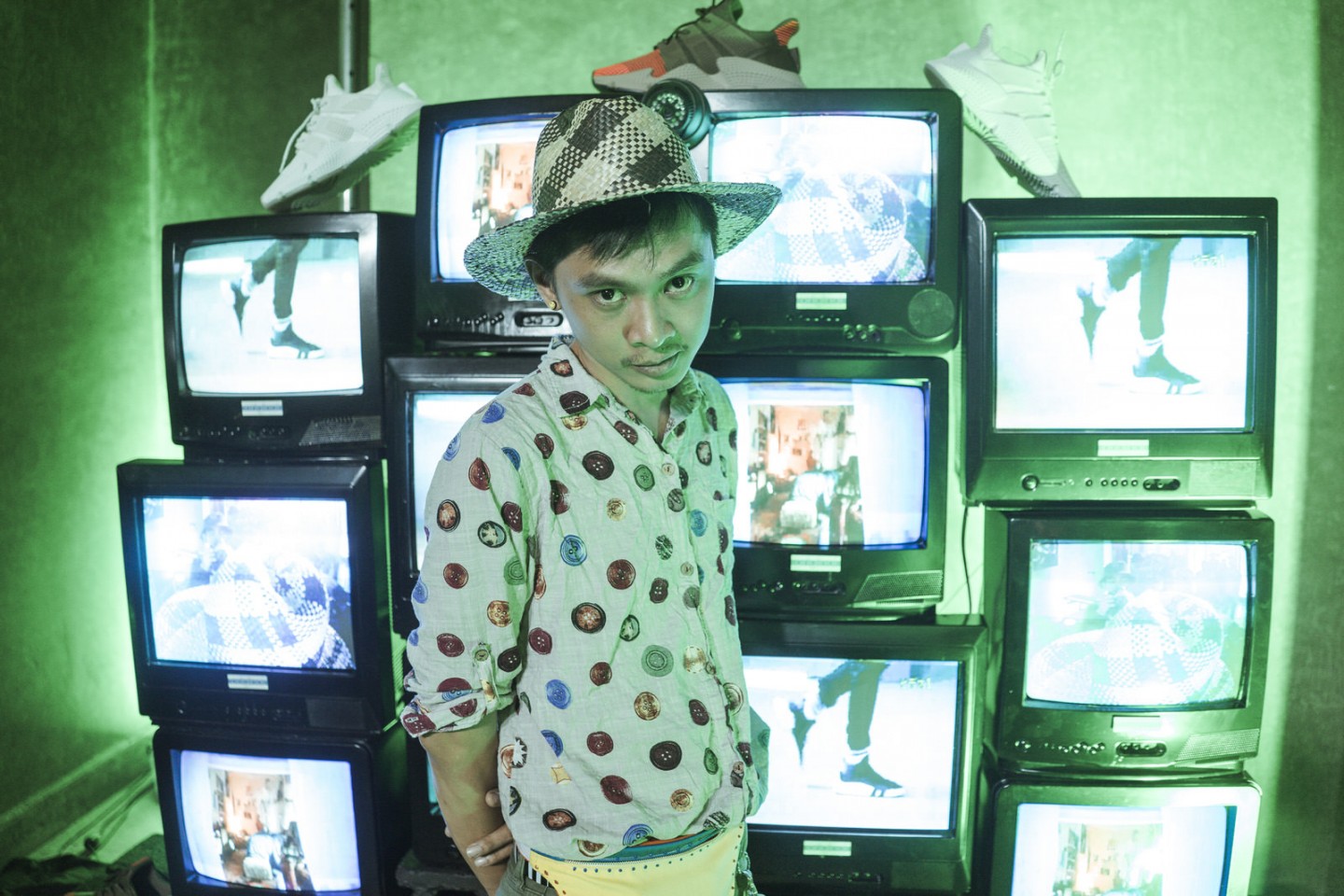

How did you start out with your brand?
Rik Rasos (Proudrace): We started out as a t-shirt label and were lucky enough to be picked up by an international store in Singapore. It was pure luck. But personally, I started out in the industry as a stylist for the longest time. My family is into manufacturing so I had a head start on the environment. So I just thought, why not? I already liked fashion anyway.
Rj Santos (Randolf): I started Randolf after graduating, beginning with tote bags and printed t-shirts. They’re inspired by pop culture because I always found it funny how obsessive the culture can get. So I wanted it to be a kind of parody. But it’s weird because when I was in high school, I thought I was going to be a photographer or a pilot. It wasn’t until my classmate’s mom lent me a bunch of magazines — i-D, Flawed, Dazed & Confused —that I realized fashion isn’t as serious as I thought it was. Akala ko puro gowns lang [I thought it was all just gowns]. That’s how I got to relate it to pop culture, because fashion also shouldn’t always be taken so seriously.
Ninyo Frias (Bastard): I wanted an outlet, and Meme and I had the same taste. It made sense to work together because she had a background in fashion and events, and I liked looking at clothes.
Meme Gomez (Bastard): It’s funny because we didn’t know we were about to make a brand. We started with one t-shirt that we just shared with all our friends. People ended up really liking it so from there, we decided to keep making stuff until it eventually became a collection.
Willar Mateo (Salad Day): When I was in high school, the word “Salad Day” had a special meaning to me. If the day ended on a happy note or I discovered something great, I called it a “Salad Day.” ‘Yun ‘yung naging inspiration ko [That’s what became my inspiration]. Since I was young, I already loved dressing up. ‘Yung lola ko, gusto niya sana mag-nursing ako pero hindi ako pumayag mag-aral kung hindi fashion [My grandmother wanted me to go to nursing school, but I refused to study unless it was for fashion]. After graduating, I interned at the I Love You store, and then eventually under other designers like Gian Romano. I really strived to learn and pursue fashion, hanggang na-start ko na ‘yung sarili kong brand [until I started my own brand].
French Andico (Revere): We used to be all about Christian metal music. That’s where “Revere” came from, it’s a word for veneration and respect. We had friends who were in t-shirt businesses in Davao so na-expose kami [we were exposed to it]. But before, we didn’t know if we belonged there. Kasi nung tinitingnan namin ‘yung ibang fashion, iniisip namin, “parang hindi kami ‘to ah!” [Because when we looked at other styles, we’d think, “This doesn’t seem like us!”] But from the start, all our collaborations with other artists, talagang may meaning [it had meaning]. We only get people we truly believe in.
Further showcasing the concept of progression, the brands also partnered with aspiring local photographers to put together a live photoshoot, held at The Ruins, Poblacion, Makati last February 24, 2018. With the vibrant Poblacion as their playground, the shoot provided a creative canvas for the budding photographers and brand owners, who directed and styled their models using pieces from their own label alongside different styles of the adidas Originals Prophere.
Photographers: Allana Aldea, Aly Uy, Kristal Dioneda, Marc de Mesa, Lance Manuel, Rainier Gonzales, Zaldine Alvaro, Ed Enclona, Rob Bryan Leocario and Kevin Mueco
Steffi Ziebert and Jerrick Ahanmisi wearing clothes from Proudrace and the adidas Originals Prophere
How did you navigate the early stages of putting together your clothing brand? Did you have any doubts, or were you always confident that this is what you wanted to pursue?
Rik Rasos (Proudrace): Like I mentioned, my family is into manufacturing so it exposed me to the industry early on. But I went to business school and my partner was an industrial designer. That was all the background we had, and honestly, we were pretty much clueless on the whole fashion thing. It was all trial and error. We just went with our gut feel, thinking, “Oh, maybe this is what we should produce because this is what we know and like.” I’d say it was our authentic selves reflecting on what we did, which is how we eventually built our style.
Rj Santos (Randolf): I took up clothing technology at the University of the Philippines, Diliman. As soon as I got out of school, I was already planning my brand, coming up with my own graphics and prints. Of course, when you graduate, you feel like you can take over the world. But eventually, I started questioning myself, “is it worth it?” But I didn’t give up that easily.
Meme Gomez (Bastard): It was a challenge to mash our ideas together as partners. Even if we had the same taste, there are things that we didn’t agree on. So we had to figure out how to find the middle ground for that.
Ninyo Frias (Bastard): We started this brand for ourselves. That was it. Sometimes, we’d call ourselves out like, “oh, maybe this is a bad idea.” But we’ve always stayed true to what we wanted as owners.
Willar Mateo (Salad Day): For me, dressing up used to be just a hobby. But since nag-spark na din ‘yung interest ko [my interest was sparked], I made sure I kept learning. I learned first-hand from other designers plus gained work experience at the store I interned in. Pero mahirap kasi [but it was hard] ever since, for Salad Day, ako lang gumagawa ng lahat mag-isa [I did everything alone]. Plus everything is hand-made. Ma-trabaho talaga siya [It was a lot of work]. Ayun, gawa lang nang gawa [So there, just keep doing].
French Andico (Revere): It was difficult breaking out into the industry because we were all the way in Davao, and all the suppliers were in Manila. The manufacturing side was a huge challenge.
Louise Fortinez (Revere): At first, we were scared people would criticize us. We came from a very niche, Christian metal background but eventually transitioned into graphic collaborations with other artists. Thankfully, people embraced it and naging mas relatable ‘yung brand [the brand became more relatable]. But we continue to be particular with our artists, making sure their designs fit in with our brand philosophy.
Issa Pressman and Aizel Segovia wearing clothes from Randolf and the adidas Originals Prophere
What was the biggest challenge in establishing your brand?
Rj Santos (Randolf): There was a time when I had to set aside my brand and be more realistic about my future. So I moved to Bangkok to work as a designer for other brands. My biggest challenge was feeling like my brand had no direction. Pero blessing in disguise din pala yung pag-alis ko [But my leaving was a blessing in disguise]. When I was in Bangkok, being surrounded by all these other artists made me realize, “if other people can do it, why can’t I?” So minsan, kailangan mo lang talaga mag-trust sa sarili mo [Sometimes, you just really have to trust in yourself], which is what I did.
Willar Mateo (Salad Day): I wouldn’t really call them “challenges”, because I’ve always loved what I do and I never thought of it as “work.” Pero ang pinaka-mahirap siguro [The hardest thing] is managing your finances. You need to have funds for your next collection. You need to pay for your shoots. The models. The photographers. I do this full time, so wala akong fall back o ibang trabaho na pang-fund [I don’t have a fall back or other job to fund my passion]. So sometimes, without a budget, your work has to be put on hold. Eh kahit passion ko ito [Even if it’s my passion], it’s still also a business. I had to realize and learn how to handle that.
French Andico (Revere): The biggest challenge was my doubts, especially coming from Davao tapos lahat ng big brands nasa Manila [and all the big brands were in Manila]. But gradually, we were able to get over it. Gusto lang namin gumawa nang gumawa, at malaking tulong ‘yung mga tao na na-meet namin along the way [We just wanted to keep on creating, and it was a huge help to meet all these people along the way]. It was inspiring, getting to know other people in the industry who had the same belief, vision, and even doubts as you. Nagkaroon kami ng [We gained a] support group and community.
Hannah Pangilinan and Bea Te wearing clothes from Bastard and the adidas Originals Prophere
How different is your clothing brand now from when you first started out?
Rik Rasos (Proudrace): Unlike most local brands, we started out with a global market. I know that may sound like a good thing but it was actually harder for us because we ended up molding our label according to the attention we were getting. We let the market dictate us. It was uncomfortable. Eventually, we were like, “This is not us.” When we were able to grasp our identity and started doing what we believed in again, we started getting picked up by the right channels. We got on Highsnobiety, Hypebeast, Vogue Talents. We never could have imagined it, but we got there — and all because we went back to doing what we wanted. But despite all that, our brand is always going to be a work in progress. I don’t think we’re ever going to feel “fully established.” We just know ourselves a lot better now.
Louise Fortinez (Revere): Mas gets na namin ngayon kung paano mag-operate as a business [We understand how to operate as a business now]. But above everything, we’re very honored that we were able to influence and inspire other artists from Davao to create and cultivate the scene. Dati, ‘yung iba naming friends, parang hindi nila maintindihan ‘yung ginagawa namin [Before, even our own friends didn’t really understand what we were doing], but now that we’ve explored and expanded our style, more people have grown to like it. Hindi naman kami nag-compromise ng style namin [We didn’t compromise our style]. Direction-wise, pareho pa rin [it’s still the same]. But there’s still so much to discover. As we meet more and more people around the country, we also learn from and become inspired by them.
Ninyo Frias (Bastard): I think the evolution of our brand came with our own personal changes in life. We used to be all-black, all angst. But now, we’re in a more positive place in our lives, which you can see in the colors of our pieces. Our collections are now more inspired.
Meme Gomez (Bastard): I don’t really want to say we’re “established,” but we have built a community and gained loyal customers who actually believe in our brand. That, to us, is good enough.
Janina Vela and Assi Abogado wearing clothes from Salad Day and the adidas Originals Prophere
In what ways do you continue to hone your craft and keep your brand alive?
Rj Santos (Randolf): I try to stay curious all the time. I never stop researching and keeping an open mind. Instead of pigeon-holing my label into a single type or genre, I open myself up to other possibilities on what more Randolph can be. Parang dati, nag-start lang ako sa mga tote bags, tapos ngayon, nag-expand na ako [Before, I just started with tote bags, but now I’ve expanded]. I’m also making it a point to release new collections more consistently. Well, sana magawa ko [I hope I do it]. Kasi doon ko din makikita ‘yung development ko [That’s how I get to see my own development], when I look at my previous collections and see how much I’ve grown.
Willar Mateo (Salad Day): Lagi ko ‘tong sinasabi na iba ‘yung nagagawa ng isip sa nagagawa ng kamay [I always say that what your mind can do is different than what your hands can produce]. I do everything handmade and the output is just so different ‘pag nahahawakan and nakaka-practice ka on your own [when you get to hold and practice with your own hands]. It’s your craft, dapat ma-feel mo talaga na ikaw ‘yun [you should feel that it’s totally yours]. Ayoko ‘yung ako lang ang taga-design, tapos ipapadala nalang sa mananahi [I don’t want to just come up with a design and send it to a seamstress to have it made]. I only make an average of 3-4 items per piece so what you get is really unique and you know that a lot of heart was put into it. It also helps you know your brand and product really well.
Louise Fortinez (Revere): For us, mahilig talaga kami mag-collaborate [we like collaborating]. So we keep our brand alive through the artists we get. Alam naming malaki ang potential nila, kaya maganda din na mabigyan sila ng outlet [We know they have huge potentials so it’s great to give them an outlet]. At the same time, it helps our business because we get to live out and grow our vision.
Meme Gomez (Bastard): We just keep continuously putting ourselves out there, whether it’s through the parties we throw or giving stuff to our friends and people we feel fit the brand. That way, it really helps in building the community. Like I said, it translates well because we get loyal customers who are like-minded. It makes us feel close to our brand, like it’s a part of us. We can never get tired of doing it.
Kerwin King and Jonas Coronado wearing clothes from Revere and the adidas Originals Prophere
Do you have an end goal? How do you know when you’ve succeeded as a brand?
Rik Rasos (Proudrace): Honestly, success is different for every person. But for our label, it’s more of the small triumphs that we value the most. Sure, we have all this recognition now. But being sustainable? Getting to pay your staff? Being able to support your team? Staying authentic? Those are what truly define your brand.
Rj Santos (Randolf): One day, I want to have a physical store and turn my brand into a company where I can employ and help out other people. I just hired a seamstress and a pattern-maker, and started investing in sewing machines, so that’s a start. Maybe matulungan ko din yung ibang tao na gusto mag-try ng fashion [I can help out other people who also want to get into fashion].
Willar Mateo (Salad Day): I feel like with every collection I put out, I become a little more successful. Ibig sabihin, na-translate ko ‘yung ideas ko into something tangible [That means I get to translate my ideas into something tangible]. ‘Pag may goal ka, dapat gawan mo ng plan [If you have a goal, you should also have a plan]. Otherwise, wish lang ‘yan [it’s just a wish]. But actually, it should never stop at your end goal. For me, this is my passion. My studio is literally my home. Lifestyle ko na ito eh [This is my lifestyle]. Whatever you see in Salad Day is me. Those are my values.
What advice would you give to your younger self, prior to all the progress you’ve made now as brand owners?
Rik Rasos (Proudrace): Don’t listen to the critics and don’t let people dictate what is authentic. I know it might be hard to pinpoint what exactly is real and what’s not real, but what matters is doing what feels right to you. Same goes for other emerging designers — always be sincere with your work. And most of all, be nice to people. Maintain a kind attitude, and it will reflect on what you’re doing.
Rj Santos (Randolf): There are a lot of brands out there, but you need to focus on your own vision and what you can offer. I mean, why should they pick your jacket when there are tons of others out there? It really matters how you present yourself.
Willar Mateo (Salad Day): Never lose the value of your work. Minsan, may dadating na mga trends tapos susubukan mong i-adapt [Sometimes, trends will come and you will try to adapt]. ‘Pag ganun, ‘wag mo kalimutan ‘yung sarili mong ideas [When that happens, don’t lose sight of your own ideas]. And get out there and find inspiration everywhere. Make a board, cut from the pages of magazines, record clips from movies, or kahit pamphlet lang ‘yan galing sa mall [even if it’s just a pamphlet from the mall]. Don’t be confined to just Pinterest or Instagram. Stay creative. That’s what builds your personality and brand.
French Andico (Revere): ‘Wag ka matakot, at ‘wag ka din ma-intimidate sa ibang tao [Don’t be scared, and don’t get intimidated by other people]. Other people just really want to help, so just be open. Join events. Talk to people. Kaya mo ‘yan [You can do it].
Meme Gomez (Bastard): Just do it.
Ninyo Frias (Bastard): And never put out anything that you don’t like.
This article is an initiative with adidas Originals and adidas Philippines.

